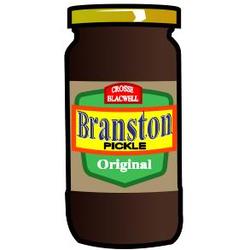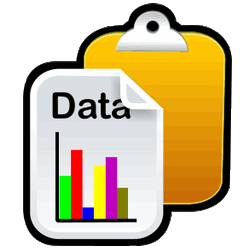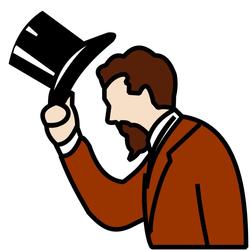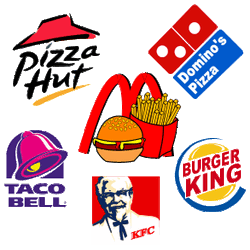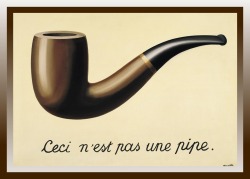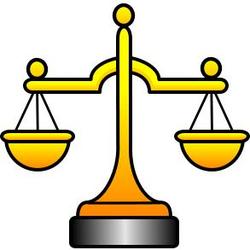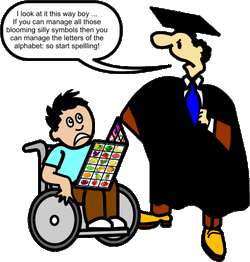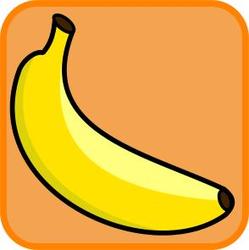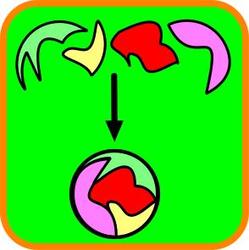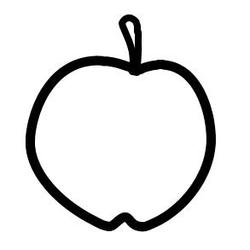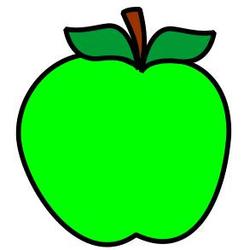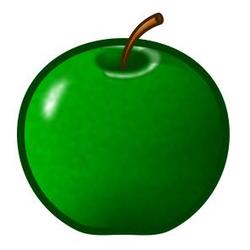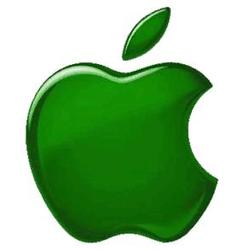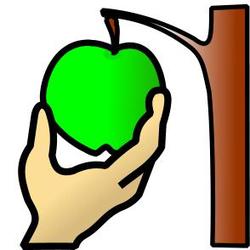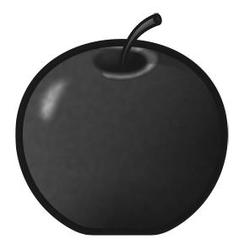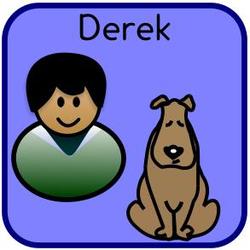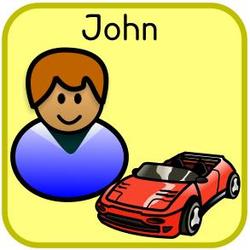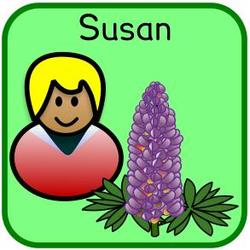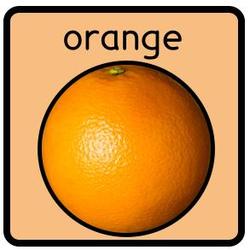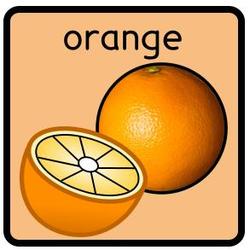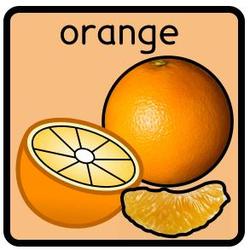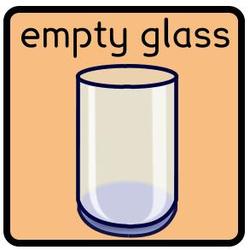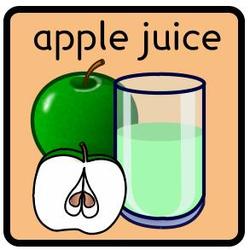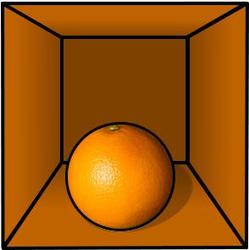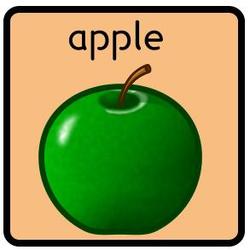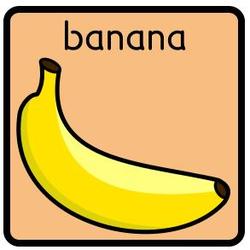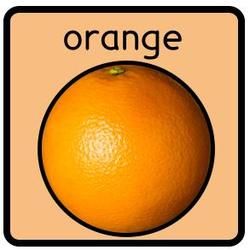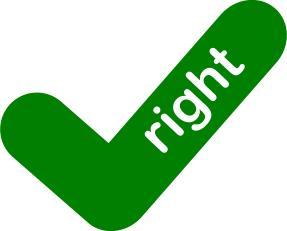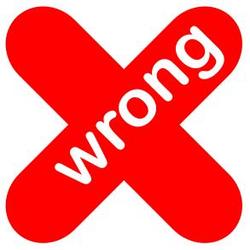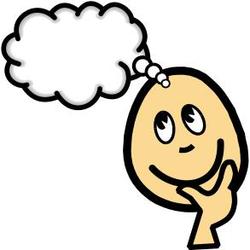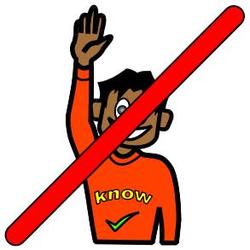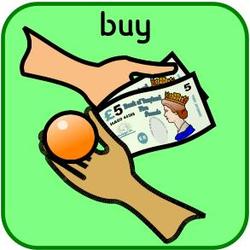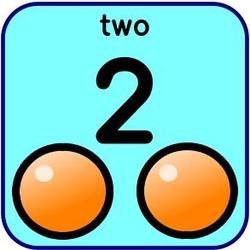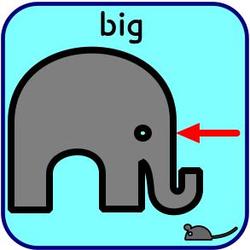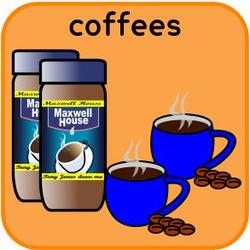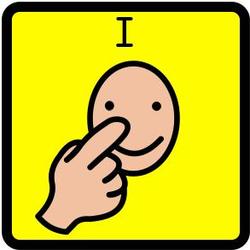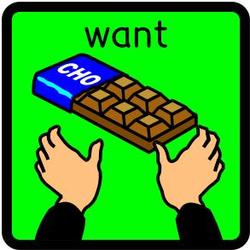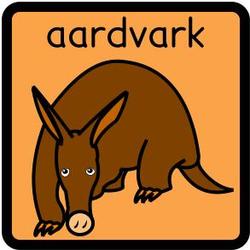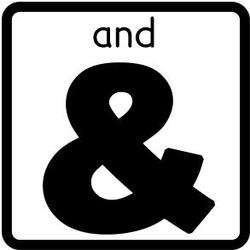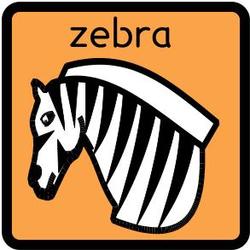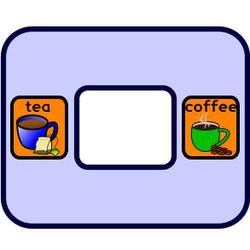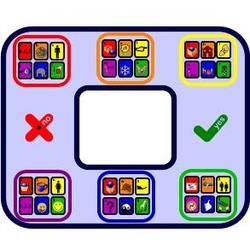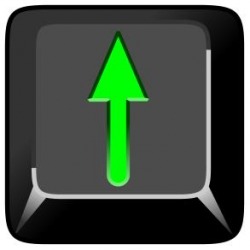Symbols, Symbols, Symbols
"It's the power of using symbols that makes men lords of the earth" Susanne Langer (1942)
(Philosophy in a New Key: A Study in the Symbolism of Reason, Rite, and Art)
Humans are ... 'The Symbolic Species' (Terrence Deacon 1997, Penguin Press).
This page is still under construction:
any portion of it may change with time and new sections are still to be added.
I apologise for any inconveience this may cause.
(Philosophy in a New Key: A Study in the Symbolism of Reason, Rite, and Art)
Humans are ... 'The Symbolic Species' (Terrence Deacon 1997, Penguin Press).
This page is still under construction:
any portion of it may change with time and new sections are still to be added.
I apologise for any inconveience this may cause.
What is a symbol? A symbol is something that someone intends to stand for something other than itself. A symbol is something that represents something else by association, resemblance, or convention. It does not have to be an image: for example, a rose can be said to be a symbol of love, a cup can be used as an Objects Of Reference symbol for break time, and a cross a symbol of hope. However, on this page we will be looking at one form of symbol in particular: a two dimensional design, drawing, picture or sketch that is used to represent another thing. Symbols are all around us and we see them every day. Some are so commonplace that we take them for granted (see the six symbols below for example). Indeed, as you read this webpage there are probably tens of symbols about your computer screen. Such symbols are typically called icons but for the purposes of this page, at least, we will use the terms interchangeably.
While we might be aware of the meanings of lots of symbols in our environment, no symbol is entirely transparent: while some are easier to recognise than others, they all have to be learnt. Thus, it should not be assumed that replacing text (or other) with a symbol automatically ensures Learner comprehension; it most certainly does not.
This section of the website deals with all aspects of symbols from detailing what symbols are available to ideas for teaching using symbols. If you believe that there are factual errors on the page or there is an aspect missing or just want to comment, please contact me.
This section of the website deals with all aspects of symbols from detailing what symbols are available to ideas for teaching using symbols. If you believe that there are factual errors on the page or there is an aspect missing or just want to comment, please contact me.
The Importance of Symbols
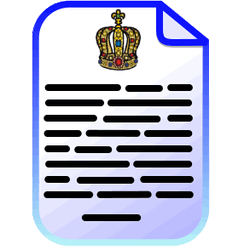
The importance of the use of symbols cannot be overstated: for some, symbol use is a vital factor in inclusion in the curriculum. Symbols are thus, a means to reducing barriers to learning:
Inclusive education means reducing barriers to learning and participation for all students, not only those with impairments or those who are categorised as having special educational needs. Increasing the participation of students in, and reducing their exclusion from, the cultures, curricula and communities of local schools.
Ainscow, M., Dyson, D,. & Booth, T. 2006, Inclusion and the standards agenda: negotiating policy pressures in England. International Journal of Inclusive Education 4, 5, pp. 295-308.
In what ways does the (good) use of symbols (both with the individual and in the environment) assist the Learner?
Symbols can help to:
- assist inclusion;
- provide a means of communication;
- help with conceptual understanding;
- promote greater independence;
- assist with the development of new vocabulary;
- develop emotional security (think of recognised symbols in an 'alien' territory, for example);
- help to provide structure and routine;
- instill confidence;
- help individuals cope with change;
It should NOT be assumed that the mere introduction of symbols into an established curriculum will assure any of the above. There is a need to ensure good practice in the introduction, development and use of symbols in all areas of the Learner's day and environment. A simple lack of consistency (for example) can lead to confusion rather than clarity. The items on this page will highlight the factors in what I consider to be good practice in the use of symbols. If you disagree with any of the items or believe there are omissions, please do not hesitate to get in touch using the form at the bottom of the page.
It should not be forgotten that symbolic understanding is central to the development of the individual:
The human environment is replete with symbols of every kind, from numbers and writing to pictures, models and maps. Acquiring the
symbolic skills of one’s culture is thus a critical component of development.
Sharon, T. & DeLoache, J.S. 2003. The role of perseveration in children’s symbolic understanding and skill.
Developmental Science 6:3, pp 289–296
As such, 'symbolic understanding' has been considered separately (See next section below).
Inclusive education means reducing barriers to learning and participation for all students, not only those with impairments or those who are categorised as having special educational needs. Increasing the participation of students in, and reducing their exclusion from, the cultures, curricula and communities of local schools.
Ainscow, M., Dyson, D,. & Booth, T. 2006, Inclusion and the standards agenda: negotiating policy pressures in England. International Journal of Inclusive Education 4, 5, pp. 295-308.
In what ways does the (good) use of symbols (both with the individual and in the environment) assist the Learner?
Symbols can help to:
- assist inclusion;
- provide a means of communication;
- help with conceptual understanding;
- promote greater independence;
- assist with the development of new vocabulary;
- develop emotional security (think of recognised symbols in an 'alien' territory, for example);
- help to provide structure and routine;
- instill confidence;
- help individuals cope with change;
It should NOT be assumed that the mere introduction of symbols into an established curriculum will assure any of the above. There is a need to ensure good practice in the introduction, development and use of symbols in all areas of the Learner's day and environment. A simple lack of consistency (for example) can lead to confusion rather than clarity. The items on this page will highlight the factors in what I consider to be good practice in the use of symbols. If you disagree with any of the items or believe there are omissions, please do not hesitate to get in touch using the form at the bottom of the page.
It should not be forgotten that symbolic understanding is central to the development of the individual:
The human environment is replete with symbols of every kind, from numbers and writing to pictures, models and maps. Acquiring the
symbolic skills of one’s culture is thus a critical component of development.
Sharon, T. & DeLoache, J.S. 2003. The role of perseveration in children’s symbolic understanding and skill.
Developmental Science 6:3, pp 289–296
As such, 'symbolic understanding' has been considered separately (See next section below).
The Importance of Symbolic Understanding
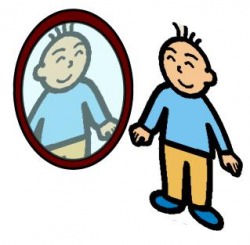
The development of symbolic understanding has not really been given the central importance it warrants in the field of Special Education. Symbolic understanding is crucial for the development of the individual, for a sense of self, for a sense of reality, for being able to consider things devoid of the here and now, for literacy, and for being human. We cannot and should not neglect this area of development.
The very language we use is symbolic and, although we may believe each word to be transparent (see below) the vast majority are actually opaque (see below). For example, we may believe there is a transparent link between the spoken word 'dog' and the animals that the term represents. However, there is no link whatsoever. Indeed, in another language, the same set of animals is represented by a completely different word and sound: French is 'chien', Spanish is 'perro', German is 'Hund'. We simply learn to associate the opaque symbol (the sound 'dog') with the four legged creature that is wandering around the house.
"A linguistic sign is not a link between a thing and a name, but between a concept and a sound pattern. The sound pattern is not
actually a sound; for a sound is something physical. A sound pattern is the hearer's psychological impression of a sound, as
given to him by evidence of his senses. This sound pattern may be called a ‘material' element only in that it is the representation
of our sensory impressions. The sound pattern may thus be distinguished from the other element associated with it in a linguistic
sign. This other element is generally of a more abstract kind: the concept" (DE SAUSSURE F. 1912 pp 98)
How our brain makes the link between the word 'dog' (or chien, perro, hund, etc) and the creature is still something of a mystery. It's not like there is a set standard to which we can compare:
"It's only for a small minority of words that we can give definitions without these fuzzy edges. Until recently, the metre was officially
defined as the distance between two particular scratches on a particular metal bar kept in a particular vault in Paris, and, if you
wanted to know if your metre stick was a metre long or not, all you had to do was to take it to Paris and lay it alongside that bar.
This works pretty well for metre, but it wouldn't work for most other words: we could hardly keep a standard dog in a vault to
compare against candidate dogs, or a standard chair, or a standard smile." (TRASK R. 1995 Page 50)
However, it is achieved, a word is a symbol for the real item, for an aspect of the real item (adjective), an action of an item (verb), a position of an item (preposition), a relationship between one item and another ... In order to learn language we must be able to both learn and manipulate symbols.
In terms of literacy, many early letter recognition schemes link letters and phonics to images: c is for cat.
This section is in development: apologies
The very language we use is symbolic and, although we may believe each word to be transparent (see below) the vast majority are actually opaque (see below). For example, we may believe there is a transparent link between the spoken word 'dog' and the animals that the term represents. However, there is no link whatsoever. Indeed, in another language, the same set of animals is represented by a completely different word and sound: French is 'chien', Spanish is 'perro', German is 'Hund'. We simply learn to associate the opaque symbol (the sound 'dog') with the four legged creature that is wandering around the house.
"A linguistic sign is not a link between a thing and a name, but between a concept and a sound pattern. The sound pattern is not
actually a sound; for a sound is something physical. A sound pattern is the hearer's psychological impression of a sound, as
given to him by evidence of his senses. This sound pattern may be called a ‘material' element only in that it is the representation
of our sensory impressions. The sound pattern may thus be distinguished from the other element associated with it in a linguistic
sign. This other element is generally of a more abstract kind: the concept" (DE SAUSSURE F. 1912 pp 98)
How our brain makes the link between the word 'dog' (or chien, perro, hund, etc) and the creature is still something of a mystery. It's not like there is a set standard to which we can compare:
"It's only for a small minority of words that we can give definitions without these fuzzy edges. Until recently, the metre was officially
defined as the distance between two particular scratches on a particular metal bar kept in a particular vault in Paris, and, if you
wanted to know if your metre stick was a metre long or not, all you had to do was to take it to Paris and lay it alongside that bar.
This works pretty well for metre, but it wouldn't work for most other words: we could hardly keep a standard dog in a vault to
compare against candidate dogs, or a standard chair, or a standard smile." (TRASK R. 1995 Page 50)
However, it is achieved, a word is a symbol for the real item, for an aspect of the real item (adjective), an action of an item (verb), a position of an item (preposition), a relationship between one item and another ... In order to learn language we must be able to both learn and manipulate symbols.
In terms of literacy, many early letter recognition schemes link letters and phonics to images: c is for cat.
This section is in development: apologies
Aided and Unaided
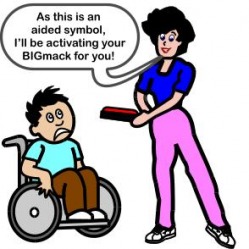
There are a number of ways of classifying symbols; one such way is to define them as aided or unaided.
Aided symbols refer to those that have a physical presence in the world. Such symbols typically rely on some form of external assistance such as a communication board or an electronic communication aid for their use. Examples of aided symbols include real objects and line drawings.
Unaided symbols refer to those that require no external device for their production. These are 'signs' produced by the human body. Examples of unaided symbols include manual signs, body language including facial expressions, and natural speech.
This page deals exclusively with the line drawing type of aided symbols.
Aided symbols refer to those that have a physical presence in the world. Such symbols typically rely on some form of external assistance such as a communication board or an electronic communication aid for their use. Examples of aided symbols include real objects and line drawings.
Unaided symbols refer to those that require no external device for their production. These are 'signs' produced by the human body. Examples of unaided symbols include manual signs, body language including facial expressions, and natural speech.
This page deals exclusively with the line drawing type of aided symbols.
Transparent, Translucent, and Opaque
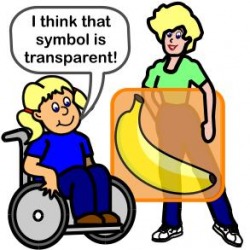
In 1976, Edward Belugi & Ursula Klima in 'The Two Faces of Sign: Iconic and Abstract' ( Evolution of language and speech: New York Academy of Sciences, Vol. 280, pp. 514-538) suggested three measures of iconicity: transparency; translucency; and opaqueness. The continuum from transparent to opaque covers the degree of guessability of a symbol, with transparent symbols being the most guessable by an untrained observer.
Transparent: The most guessable of all of the symbols. These symbols can immeadiately
be recognised by the majority of people without being provided with any
additional cues. Typically the most transparent symbols are those that are
nouns: good quality drawings of objects are normally easy to recognise.
Translucent: Transparent symbols require a little explanation to the uninitiated. Once the
symbol rationale has been made explicit, people usually remember the
rationale and will continue to recognise the symbol.
Opaque: Opaque symbols are the most difficult to link back to their referent even with
an explanation of the symbol's rationale and therefore the least guessable.
Transparent: The most guessable of all of the symbols. These symbols can immeadiately
be recognised by the majority of people without being provided with any
additional cues. Typically the most transparent symbols are those that are
nouns: good quality drawings of objects are normally easy to recognise.
Translucent: Transparent symbols require a little explanation to the uninitiated. Once the
symbol rationale has been made explicit, people usually remember the
rationale and will continue to recognise the symbol.
Opaque: Opaque symbols are the most difficult to link back to their referent even with
an explanation of the symbol's rationale and therefore the least guessable.
Fitzgerald Key
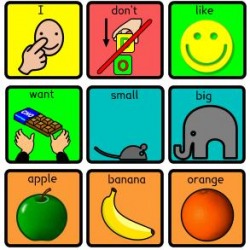
Back in 1929, Edith Fitzgerald wrote a book entitled 'Straight Language For Deaf' which, as its name implies, is a manual on a method for teaching language and grammar to those people who have little or no hearing. Although Edith divides sentences up into parts of speech, and has a key system for doing this, at no point in the book does she talk about a colour encoding system (Fitzgerald's original key was based on a set of six symbols with each standing for a particular part of speech). However, such a colour encoding system has been attributed to her and it has become known as the Fitzgerald Colour (colour) coding system. It is a means to classify different parts of speech and to make them easily distinguishable from one another. Though there appears to be no one set colour standard for every part of speech in the system, some colours are consistently used:
adjectives blue
pronouns yellow
nouns orange
verbs green
beyond that there appears to be a variety of colours used in what generally is referred to as a 'modified Fitzgerald key':
adverbials brown
conjunctions white
determiners grey
expletives red
interrogatives purple
negations red
prepositions pink
It should be stressed that you will find all manner of variations on the 'Fitzgerald key' in use although I would recommend a 'standard' as detailed above.
Of course, there may be classes within classes: for example, there are modal and auxiliary verbs as well as lexical verbs. All are colour coded green but a variation in the tone of green used can be made to great effect. Also where nouns are grouped according to categories, each category could have an alternating shade of orange such that neighbouring categories are distinguishable.
adjectives blue
pronouns yellow
nouns orange
verbs green
beyond that there appears to be a variety of colours used in what generally is referred to as a 'modified Fitzgerald key':
adverbials brown
conjunctions white
determiners grey
expletives red
interrogatives purple
negations red
prepositions pink
It should be stressed that you will find all manner of variations on the 'Fitzgerald key' in use although I would recommend a 'standard' as detailed above.
Of course, there may be classes within classes: for example, there are modal and auxiliary verbs as well as lexical verbs. All are colour coded green but a variation in the tone of green used can be made to great effect. Also where nouns are grouped according to categories, each category could have an alternating shade of orange such that neighbouring categories are distinguishable.
Symbol Typeface
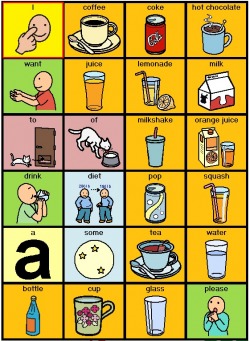
We are all used to seeing pages set out using different 'typefaces' in newspapers and magazines and books. A typeface is a set of one or more fonts, in one or more sizes, designed with stylistic unity, each comprising a coordinated set of glyphs. A typeface usually comprises an alphabet of letters, numerals, and punctuation marks. The term typeface is frequently mixed up with font; the two terms had more clearly differentiated meanings before the advent of desktop publishing. The distinction between font and typeface is that a font designates a specific member of a type family such as roman, boldface, or italic type, while typeface designates a consistent visual appearance or style which can be a ‘family’ or related set of fonts. For example, a given typeface such as Arial may include roman, bold, and italic fonts. A typeface then is more than just the use of a particular font.
As with the printed page so with symbols; indeed, a typeface may include ideograms or symbols or bemade up entirely of them. An establishment may decide on a particular 'typeface' for its use of symbols across the curriculum. Some Learner may respond to a particular typeface more than others. This has been well recognised with text: there being specific advise for avoiding specific typefaces for use with dislexics, for example (A good free introductory paper on the use of accessible text is available from Call Scotland). Symbolis can come in a variety of typefaces, from photographs to line drawings - all have their place. A list of some of these is given below. If you believe that anything is missing or incorrect please contact me so that I may amend this section of the page.
|
Colour Photographs
Colour pictures (magazines etc) Black and White photographs Miniature Objects Simple Colour Line Drawings Realistic Colour Line Drawings Simple Black and White Line drawings Realistic Black and White Line Drawings Tactile symbols Clip Art Cartoons Hand drawn images Product Logos |
Most communication software will permit the import of colour photographs to be used as a symbol on a communication board. Colour photographs with complex backgrounds generally do not serve well as symbols and tend to be confusing. It is better to use colour photographs with a neutral background or with the background removed.
Colour pictures can be cut from magazines and either directly attached to a communication board or scanned and digitised so as to be electronically manipulated. Again, communication software will allow the import of such scanned images (some may require that large file sizes are reduced). A benefit of this approach is that Learners can be involved in choosing their own 'symbols' and creating their own communication system. Often, magazine type pictures, especially those used for advertising, have simple backgrounds and, therefore, may show the concept particulary well. Black and white photographs are normally less easily recognised than the equivalent colour photograph. Colour photographs, once scanned, can be easily converted to B&W if this is required. Surprisingly, miniature objects have been shown to be less recognisable by some people with an intellectual impairment than good quality photographs (Beukelman, D. R., & Mirenda, P. (1992). Augmentative and alternative communication management of severe communication disorders in children and adults. Baltimore, MD: Paul H. Brookes. Reichle, J., York, J., & Sigafoos, J. (1991). Implementing augmentative and alternative communication. Baltimore, MD: Paul H. Brookes). Using real objects as symbols is normally associated with a technique called Objects Of Reference first devised in the mid 1960s by Jan van Dijk. Using objects as symbols has obviously implications for storage space. However, such symbols may be useful in illustrating noun concepts in teaching. Most symbols in use on communication systems today take this form. There are many sets from which to choose (see below), some offering an extensive range of symbols. Realistic colour line drawings tend to be three dimensional drawings that look like the real thing and are nearer to a photographic image than a simple stylised colour drawingWhile a side elevation outline of a car might be recognisable by some, the realistic line drawing would probably be more readily recognisable. Such images have a greater degree of iconicity. For some adults, simple colour line drawing can seem a bit childish and they might find realistic line drawings more age appropriate. The black and white version of the simple colour symbols. They might appear clearer to some people. Some people prefer black and white images. B&W can also appear a litle more adult in some instances. The black and white version of the colour realistic line drawings. For those that have a problem of visual acuity, visual symbols may be inappropriate. There are a number of tactile symbol systems in existence. (see - Chen, D. &Downing, J.E., (2006), Tactile Strategies for Children Who Have Visual Impairments and Multiple Disabilities: Promoting Communication and Learning Skills, AFB Press ) Tactile symbols systems include Braille, Moon ( Moon was devised by Dr William Moon LLD (1818 - 1894). This system of tactile reading was based on simplified alphabetic characters, and is considered to be much easier to learn than Braille. It is often used by people who lose their sight in later life because of this fact. The process of producing Moon was not straightforward, and Braille became most popular because of the ease with which it could be produced, either by machine or by hand), Fishburne, Tack-tiles, and the use of objects as in the OOR scheme for people experiencing a Profound Intellectual Impairment. There are lots of clip art packages in a variety of styles available from computer stores and on line some better than others. Most search engines can search for items of clip art on the web. Such web items are likely to be copyright though it is unlikely that there use in an individual's communication system will cause any problems. Clip art is typically avialable in a variety of formats - check that these are compatibble with your communication system's requirements before making any purchase. Cartoon clip art may be appropriate to use in some instances to illustrate a concept. Catoon drawings may be the best to illustrate parts of speech such as verbs. Of course, it is possible to hand draw images for use in any communication system. Hand drawn these days may involve the use of a commercial computer package like Corel Draw which can produce some amazing results! However, even those drawn more traditionally may of value especially if drawn in view of the Learner in context. Hand drawn images may not be of great quality but can serve an immediate need when other sources aren't readily available. Product logos may be readily recognised by many Learners and very useful as a means to indicate a need for a specifc product. Most are readily avialable on the web and some symbol sets contain product logos. |
It should be noted that, according to research (Beukelman & Mirenda, 1992; Reichle, York, & Sigafoos, 1991), when dealing specifically with nouns, the easiest to hardest to learn among the symbol systems is:
1. real objects
2. colour photographs
3. black-and-white photographs
4. miniature objects
5. colour line symbols (5 and 6 may be swapped for some Learners)
6. black-and-white line symbols
7. blissymbols
8. written words.
Thus, a Learner who is a pre-intentional communicator may start with concrete objects and then move on to a more abstract, extensive system. It should not be assumed that simply because a system is ranked lower it is less efficient or less valuable: the information you are now reading uses the last on the list and yet is probably the most powerful. Often, systems that are that bit harder to learn to use are the more powerful in the long term and therefore should not be dismissed.
1. real objects
2. colour photographs
3. black-and-white photographs
4. miniature objects
5. colour line symbols (5 and 6 may be swapped for some Learners)
6. black-and-white line symbols
7. blissymbols
8. written words.
Thus, a Learner who is a pre-intentional communicator may start with concrete objects and then move on to a more abstract, extensive system. It should not be assumed that simply because a system is ranked lower it is less efficient or less valuable: the information you are now reading uses the last on the list and yet is probably the most powerful. Often, systems that are that bit harder to learn to use are the more powerful in the long term and therefore should not be dismissed.
Text with Symbols
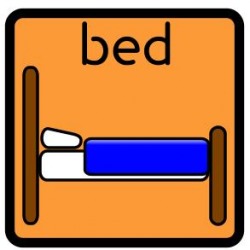
It is generally considered good practice to have a text label accompanying a symbol. While not all symbol users will become literate, repeated exposure to the word with the symbol may eventually lead to sight recognition. Generally, text should be above the symbol rather than underneath. This is so that when Learners or others point to a symbol their hand does not obscure the text. Text should generally be lower-case, well spaced, sans serif format, with a clear distinction between the letters that many people confuse (b and d for example). A good text to use is the Lexia font which is available for free download for non-commercial use here. The text colour chosen should form a good contrast with the background, Black on white is not always best. Indeed, it is not the recommended colour scheme for dyslexics which should be a dark colour on a light coloured background. Off white or a grey white is better than pure white. A good free introductory paper on the use of accessible text is available from Call Scotland.
Iconicity: Primary and Secondary

Typically, the majority of people would recognise the symbol on the left as an icon. However, as an icon is defined as 'a sign or representation that stands for its object by virtue of a resemblance or analogy to it', all symbols used for the purpose of cognition and or communication are icons.
Iconicity is defined as the degree to which any symbol visually represents its referent. By definition, therefore, some symbols are more 'iconic' than others. Thus, some symbols' referents, are more 'guessable' than others.
There are two forms of iconicty; primary and secondary. Simply put, primary iconicity is the most common association that is made with regard to a particular image. Primary iconicity is really a statistical phenomenon. As an example, take a look at the picture below and think about what words come to mind when you look at it.
If you show this image to one hundred people and ask them to write a list of all the words that come to mind when they see it, around 45% put sun as their first choice. This is the primary iconic association for this picture. Other choices include happy, hot, and smiling. These would all be called secondary iconic associations. What is critical to remember is that all pictures have a primary value and a bunch of secondary ones. In a 1994 study (Cross, R., Iconicity and Associative Meaning: What are we looking for? In Proceedings of the 6th Biennial Conference of the International Society for Augmentative and Alternative Communication, 126-127. Hoensbroek: IRV.), a 'sun' image above elicited no less than 22 different associations.
Primary iconicity may then be seen as what a symbol denotes and secondary iconicity as what a symbol connotes.
Primary iconicity may then be seen as what a symbol denotes and secondary iconicity as what a symbol connotes.
Iconicity: Univocal and Polysemic

There are different forms of iconicity; two of which are known as univocal (one voice) and polysemic (many meanings).
Univocal icons have a single meaning. When they are selected they always represent the same vocabulary. Thus when a symbol of a cat is selected, if it has been programmed to say 'cat', it will always say 'cat' whenever it is chosen. Thus, an overlay comprising 60 univocal symbols can only generate 60 items of vocabulary unless the system has some way of switching between levels (in which case, each level will have 60 items of vocabulary.
Polysemic icons have the potential to have more than one meaning. When selected, the symbol may say any one of a finite number of things depending on what other (prior) symbol(s) has been selected. There are different approaches to the use of Polysemic Iconicity. One approach is known as 'Semantic Compaction' or 'Minspeak'. Minspeak is defined as 'the systematic exploitation of secondary iconicity to provide large vocabularies within a small icon space'. In a Minspeak system, vocabulary output is provided through the conjoining of symbols. For example, in the Language, Learning, and Living Minspeak system (Jones 1990) when HOUSE (building) is selected followed by the NURSE, the resultant output is 'hospital'. However, when the WORK symbol is followed by the NURSE the output is 'nurse'. The first symbol typically sets the category or part of speech, while the second symbol selects the vocabulary required. Thus, any symbol is capable of conveying many meanings. For a full description of the Minspeak system visit the Semantic Compaction website.
Minspeak is not the only form of Polysemic Iconicity. It is possible to generate alternative outputs from a single symbol by using a system of syntactic rules. Such a system looks at what vocabulary has already been generated (as opposed to the Minspeak approach of looking at what symbols have been selected) and allowing a symbol to output vocabulary accordingly. Thus, if the symbol was one that normally generated the pronoun 'I', it could, when proceded by a vocabulary selection that read 'give it to', say 'me' or 'my' (as 'Give it to I' does not make sense in English). Such 'iconic syntactical polysemy' was developed by Jones while lecturing at Bridge College (1997) and utilised in the later ViP communication system.
Symbol Sets
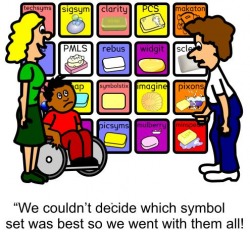
It may surprise you to know that there are, at least, 50 different symbol sets out there for use in AAC! While most people know of two or three sets there are many other choices open to us. I have compiled a page that lists what I have been able to find out about each of the sets. I do not claim that this is totally comprehensive or that I have every fact absolutely correct ... if you know of another set, or know of a mistake, or you can complete a missing piece of information, please contact me using the form provided at the bottom of this page and I'll update the form so that all may benefit.
Is any one set better than any other? That is very difficult to say. Some contain a bigger range of symbols than others; some are cheaper (some are free for non-commercial use); some are more accessible and not locked away; some have associated software which can help produce communication boards and overlays; some are more widely used. In the end, it may be a matter of best fit to the Learner and personal preference.
The cartoon shows a school that has decided to go with all the sets! There are those who will state that an establishment should select one set for all Learners and those that will state it should be on an individual basis. I have heard it stated that it is better for children to learn that there can be more than one image of a horse (for example) as they will encounter many images of any one item in their lifetime. Thus, it is not ideal to go with just one symbol set. Others will argue that it is less confusing for the Learner, easier for staff to create resources, assists transition, and more inclusive when a single symbol set is selected. While I can see logic and value in both sides of the debate, I would probably (unless you can convince me otherwise) come down on the side of a single system if pushed. However, there may be drawbacks to a single system:
- What happens if a Learner comes from a different establishment already using a different system?
- How are Learners enouraged to transfer skills with only one image?
- What happens if a 'better' set of symbols suddenly comes on to the market?
- What if the chosen symbol set does not contain the symbol for a required word?
- If a piece of software uses a different set, is it excluded from the establishment?
On the other hand, in order to begin promoting a symbol set, the Learner should be experiencing it in his/her daily life (around the school). If there are several symbol sets displayed, that could be very confusing but, if one is used consistently then, it might begin to form associations prior to any direct teaching taking place.
However, Talksense does not endorse one set or one approach more than the other. However, Talksense does endorse good practice which can be achieved with any set or combination of sets.
To see the available symbol sets: go to the TalkSense Symbol Set Page.
The Consistency Change Condundrum
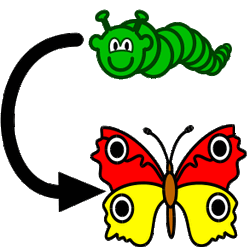
The consistency Change Condrum refers to a specific problem caused by imposing curricula consistency on a symbol set. Let us supposed that we have selected a set of symbols called 'Superb Symbols' from 'Superb Suppliers Ltd' (both are entirely fictional) to be our symbol set of choice for use across the school or college. Staff put in hundreds of hours of work over the year creating resources for pupils to ue and to benefit. The years role by and 'Superb Symbols' continue to be a good symbol set but suddenly 'Smashing Symbols' appear on the market. This symbol set may have additional benefits to 'Superb Symbols' but we are already committed to 'Superb Symbols'. Do we stick with them or do we carry on? Is that carry on indefinitely? Or will we ever change? What is the catalyst for change?
A modern addage is that 'the only constant in life is change'. If this is a truism, then how do we cope with change when we are trying to be consistent? Consistently change! Actually, it is not as drastic as that: it is more that we should plan to review so that change can occur. How often should we review? That depends on what we are reviewing but, in the case of 'Superb Symbols' our policy and procedure document on symbols should suggest a review at least every three years. The outcome of the review may be to continue with 'Superb Symbols' for another three years: it does not automatically follow that the review will mean everything changes.
Staff should always produce support materials with a view to change. Thus, all materials should be saved on disc in an accessible form and backed up with a recognisable file name which includes the date of creation (Romans in Britain 20-5-05). This file name should be included on the print out itself (albeit very discretely) so that if a return to this document is ever required, it can be easily located.
A modern addage is that 'the only constant in life is change'. If this is a truism, then how do we cope with change when we are trying to be consistent? Consistently change! Actually, it is not as drastic as that: it is more that we should plan to review so that change can occur. How often should we review? That depends on what we are reviewing but, in the case of 'Superb Symbols' our policy and procedure document on symbols should suggest a review at least every three years. The outcome of the review may be to continue with 'Superb Symbols' for another three years: it does not automatically follow that the review will mean everything changes.
Staff should always produce support materials with a view to change. Thus, all materials should be saved on disc in an accessible form and backed up with a recognisable file name which includes the date of creation (Romans in Britain 20-5-05). This file name should be included on the print out itself (albeit very discretely) so that if a return to this document is ever required, it can be easily located.
Core and Fringe Vocabulary

Studies of English language use from a diverse range of populations show a remarkable similarity in the listing of the top 500 words in use. These words have become known as ' Core Vocabulary ' with the remaining words (which outnumber the core by a factor of at least 1000:1) being known as 'Fringe Vocabulary'. By far the most extensive of these studies is the Oxford English Corpus. The OEC contains over a billion words and yet, when analysed, the top ten lemmas (word roots) account for a whole 25% and the top 100 words account for half the database! These items are used very frequently indeed; others pale into insignificance by comparison. It would appear wise then to include the teaching of at least some of these symbols in any introduction to using symbols for communicative purposes. The top 100 items in this data set are detailed below.
For other core vocabulary studies start here.
After studying the table of the top 100 lemmas used in English, it should become evident that:
- the list is populated by very many non-picture producing items;
- there are very few nouns (in red);
- nouns do not enter the list until position 61.
Many of the top words in English Core Vocabulary are not picture producers: try illustrating the words 'the', 'of', 'have' and 'by' for example. Such symbols tend to be translucent/opaque in all symbol sets. Perhaps surprisingly, there are only four nouns in the top 100 words (although 'work' is actually both a verb and a noun). Nouns are normally easier to depict in symbol form. Other studies support this fact. You might think that children's vocabulary would be more heavily populated by nouns but this is not the case. In Bridie Raban's study of the spoken vocabulary of five-yeard old children, the top 100 words only contained two nouns that, in fact were the same word (mum and mummy)! Typically, nouns only sparsely populate core vocabulary lists. Nouns are, in the main, fringe vocabulary words.
If nouns are not as frequently used as other areas of speech, as the evidence would suggest, then, surely, evidence-based practice would introduce core vocabulary items in preference to teaching the symbols for lots and lots of nouns. However, this does not appear to be the case. The examination of the early communicative systems of many learners typically show symbols for lots of nouns and very few for Core Vocabulary. Why is this? Perhaps it is because Significant Others believe that nouns are:
- more prevalent in Core Vocabulary;
- are easier to teach than other parts of speech;
- more important and useful than other parts of speech;
- more understandable to the Learner at this level.
While, indeed, some of the above may hold some truth, there are a lot of nouns and this fact leads to a significant issue: how are they to be arranged in any symbol system? Typically, they are placed in categories or in themes and a 'page-approach' is utilised. In a page-based system, each page contains a set of vocabulary covering a particular category or theme. Thus, the Learner has to navigate to a particular page to select a specific item of vocabulary. This raises several issues:
- which vocabulary is to be selected?
- the more nouns the more pages: the greater the cognitive and physical demands;
- the more pages the greater the demands placed on memory.
- how is the Learner to acquire 'automaticity' (as for example, in touch typing)?
As it has already been demonstrated that nouns are infrequently utilised in everyday conversation, then it follows that the nouns in the system, so created, will be infrequently accessed. As we tend to remember those things that are met frequently and forget those things that are used infrequently, such an approach to the use of symbols is fraught with danger. Furthermore, this methodolgy has the potential to emphasises a conversational style that is populated with requests for nouns/things. This is not typical of conversation. Indeed, staff are in danger of teaching a deviant form of communication and, thus, creating a form of 'self- fulfilling prophecy' in which individuals who use symbol based communication sets learn an atypical communication style which does not prepare them for adult life and promotes exclusion rather than inclusion.
- the list is populated by very many non-picture producing items;
- there are very few nouns (in red);
- nouns do not enter the list until position 61.
Many of the top words in English Core Vocabulary are not picture producers: try illustrating the words 'the', 'of', 'have' and 'by' for example. Such symbols tend to be translucent/opaque in all symbol sets. Perhaps surprisingly, there are only four nouns in the top 100 words (although 'work' is actually both a verb and a noun). Nouns are normally easier to depict in symbol form. Other studies support this fact. You might think that children's vocabulary would be more heavily populated by nouns but this is not the case. In Bridie Raban's study of the spoken vocabulary of five-yeard old children, the top 100 words only contained two nouns that, in fact were the same word (mum and mummy)! Typically, nouns only sparsely populate core vocabulary lists. Nouns are, in the main, fringe vocabulary words.
If nouns are not as frequently used as other areas of speech, as the evidence would suggest, then, surely, evidence-based practice would introduce core vocabulary items in preference to teaching the symbols for lots and lots of nouns. However, this does not appear to be the case. The examination of the early communicative systems of many learners typically show symbols for lots of nouns and very few for Core Vocabulary. Why is this? Perhaps it is because Significant Others believe that nouns are:
- more prevalent in Core Vocabulary;
- are easier to teach than other parts of speech;
- more important and useful than other parts of speech;
- more understandable to the Learner at this level.
While, indeed, some of the above may hold some truth, there are a lot of nouns and this fact leads to a significant issue: how are they to be arranged in any symbol system? Typically, they are placed in categories or in themes and a 'page-approach' is utilised. In a page-based system, each page contains a set of vocabulary covering a particular category or theme. Thus, the Learner has to navigate to a particular page to select a specific item of vocabulary. This raises several issues:
- which vocabulary is to be selected?
- the more nouns the more pages: the greater the cognitive and physical demands;
- the more pages the greater the demands placed on memory.
- how is the Learner to acquire 'automaticity' (as for example, in touch typing)?
As it has already been demonstrated that nouns are infrequently utilised in everyday conversation, then it follows that the nouns in the system, so created, will be infrequently accessed. As we tend to remember those things that are met frequently and forget those things that are used infrequently, such an approach to the use of symbols is fraught with danger. Furthermore, this methodolgy has the potential to emphasises a conversational style that is populated with requests for nouns/things. This is not typical of conversation. Indeed, staff are in danger of teaching a deviant form of communication and, thus, creating a form of 'self- fulfilling prophecy' in which individuals who use symbol based communication sets learn an atypical communication style which does not prepare them for adult life and promotes exclusion rather than inclusion.
Symbol Supporting Strategies
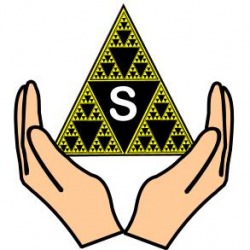
There are many ways to introduce symbols to Learners; a few are detailed below. If you know of an important one that ought to be included please conatct Talksense and let me know and I will add it in so that all can benefit.
One Learner's transparent is another Learner's Opaque. We have seen that (above) symbols can be classified as transparent, translucent, and opaque. It should not be assumed that because a symbol's meaning is clear to you that it will be clear to the Learner: it may not be. All symbols rely on a world knowledge: for example, a simple outline may be recognised as a chair if the individual has experience of chairs and understands that outline shapes can represent concrete things in the real world. It is understood that a single line drawing of a chair represents any chair in the real world only by those who have come to realise the convention. However, while the line drawing may be a really good approximation of a dining chair, it looks nothing like the armchair that the Learner uses most often! Thus, while we might know that a particular Learner has had experiences of chairs, we should not simply assume that the Learner understands that the line drawing is a representation of any chair in the world. Indeed, it should not be taken for granted that the Learner understands that it is a 'chair' at all. Symbols must be taught!
One Learner's transparent is another Learner's Opaque. We have seen that (above) symbols can be classified as transparent, translucent, and opaque. It should not be assumed that because a symbol's meaning is clear to you that it will be clear to the Learner: it may not be. All symbols rely on a world knowledge: for example, a simple outline may be recognised as a chair if the individual has experience of chairs and understands that outline shapes can represent concrete things in the real world. It is understood that a single line drawing of a chair represents any chair in the real world only by those who have come to realise the convention. However, while the line drawing may be a really good approximation of a dining chair, it looks nothing like the armchair that the Learner uses most often! Thus, while we might know that a particular Learner has had experiences of chairs, we should not simply assume that the Learner understands that the line drawing is a representation of any chair in the world. Indeed, it should not be taken for granted that the Learner understands that it is a 'chair' at all. Symbols must be taught!
Expressive and Receptive
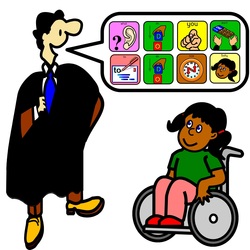
Languages are used for both expressive and receptive communication. That is, we can express our thoughts, feelings, needs and wishes to others (expressive) as well as listen to the thoughts, feelings, needs, and wishes of others (receptive). All languages work in this way: they are used for both expression and to listen and learn from others. However, AAC symbol systems tends to vary from this pattern in that they are not used (as frequently) for receptive communication. That is not to say that, in some establishments, use is not made of symbols as an expressive medium but such use falls below the 'norm' when compared to other 'language' systems. We tend not to use symbols as an expressive medium to the Learner but require the learner to use symbols as an expressive medium to us. Of course, while teaching symbols we would have them on hand to illustrate concepts, there might be symbols displayed around the environment used to label items around the building, There might be symbol charts on classroom walls, and symbol support for classroom papers, etc but, generally, we do not use the symbol system to communicate with the Learner. This is seemingly in opposition to what happens with the use of signed systems for example. Teachers will, typically, sign to the Learner and expect the Learner to sign back in response. That is not to say that the best approach to the introduction of symbols is total immersion in an alternative symbolic system but it is worth considering that probably the best way to learn French is to go and live in France and marry someone who can speak only French. A lttle drastic, I realise but, I am trying to make a point! What we need to ask ourselves is, how can we increase the Learner's Receptive experience of the symbolic language of choice while trying to develop his/her expressive abilities.
It should be stressed that the use of symbols in a receptive modality does not exclude the use of speech. Speech should accompany the use of symbols as it accompanies the use of sign in many signing systems.
RUSE: Receptive Use of Symbols in Education. RUSE is a set of techniques developed by Jones (2000) for increasing the receptive use of symbols in an educational (and other) environment. Not all the RUSE techniques will be applicable to all establishments and may be adopted, adapted or rejected as deemed necessary. Rather than explain the RUSE Techniques here, and now, they have been broken down and expanded into different sections appearing (or to appear) on this page. Which ruse will you use? I hope that some will inpire you!
It should be stressed that the use of symbols in a receptive modality does not exclude the use of speech. Speech should accompany the use of symbols as it accompanies the use of sign in many signing systems.
RUSE: Receptive Use of Symbols in Education. RUSE is a set of techniques developed by Jones (2000) for increasing the receptive use of symbols in an educational (and other) environment. Not all the RUSE techniques will be applicable to all establishments and may be adopted, adapted or rejected as deemed necessary. Rather than explain the RUSE Techniques here, and now, they have been broken down and expanded into different sections appearing (or to appear) on this page. Which ruse will you use? I hope that some will inpire you!
By Association:

For all Learners, at whatever level of ability, symbols can be on view. The symbols are NOT the focus of the staff's attention: that is, the staff will not be drawing the atttention of the Learner to them but it will be hard for the Learner not to see them if vision is not an issue. There are, at least, a couple of ways achieving this:
- add symbols into a prior scheme. For example, into the Objects Of Reference that are in
use. In the image to the left, a symbol for 'meal' has been attached permanently to the
OOR for mealtime. Staff's focus is on the OOR and NOT on the symbol attached to the
OOR. However, everytime the OOR is presented, the symbol accompanies it. When
Learners are ready to move from one system to the other, they will have already
experienced some symbols in association with some POLE (Person Object Location or
Event) on a regular basis.
- label the environment (see below);
For this is have any impact, the symbols must be used consistently and there cannot be multiple symbol sets on display (though multiple symbols sets may be in use).
Label the Environment
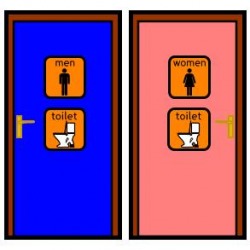
We 'experience' the world as we move through it. Our brains try to make sense of all the sensory data coming from our eyes, ears, hands, etc. We begin to make associations between one peice of sensory data and another; we may learn, for example, that when we see the post box furhter up the road that it is immediately outside of the Post Office even though, at that point, we cannot actually see the post office. The Post Box comes to represent the Post Office and we would be completley surprised if, on reaching the post box, the Post Office had disappeared and been replaced by a supermarket overnight. All children 'learn' such things. The child who is experiencing a profound intellectual impairment is able to move around the room and does not walk into the walls. Why not? The child must have learned at some point that walls are hard and it is not possible to pass through them. The same child when given a cup raises it to his lips and manipulates it so as to drink; sometimes, even if it is empty. How does the child 'know' to do this? We might argue that this skill is innate, that our brains are hard-wired with a Chomskyesque C-A-D (Cup Acquisition Device)! However, the vast majority of us (if not all of us) would recognise that this is a skill that had been learned by the individual through countless experiences of cups and thousands of repetitions of the drinking behaviour. The child has learned that the sight of the cup is representative of the concept of drinking and may even go through the process if there is no drink in the cup.
If the environment is engineered so as to make use of this experiential learning, even the child experiencing a profound intellectual impairment may benefit. Labelling the environment is one form of environmental engineering that can assist a Learner to understand that symbols relate to particular concepts. Many parents label the environment to help there children to learn to read. Words are printed out and attached to objects around the house so a child can come to undertand that the word stands for the thing, as well as, how the word is spelt. Similary, symbols used consistently across the environment can perform the same function. However, if multiple symbols sets are being used (in a school for example), this is more difficult to achieve, as having twenty symbols on a door is not quite as clear as having one! This is an argument supporting the use of a single symbol set in an establishment where there are likely to be many Learners requiring symbol use. Labelling the environment not only helps the Learners but also assists the staff who also have to learn the meaning of the symbols in use.
These individuals, in contrast, must begin the AAC acquisition process by establishing the relationship between AAC symbols
and their real-world referents, relying, perhaps almost exclusively, on contextual clues in the communicative environment to
extract meaning through the visual modality (ROMSKI M. & SEVCIK R. 1993)
When labelling the environment specific conventions must be followed to provide consistency for the Learners. For example, doors should be labelled on the exterior with the room or cupboard contents and, on the interior, with the symbol for 'door'. I have witnessed a set of toilet doors, which were all identical, with some showing the symbol for 'toilet' and others showing the symbol for 'door' all on the exterior: this is not good practice. If a room is used for a variety of subjects, then it would be very confusing to have the symbols for every activity displayed; rather, it would be better to have a system where staff could easily and quickly add a symbol to a door and then remove it when the session has finished.
While labelling the environment with symbols is a good strategy, it is only a small beginning. Labelling in such a way only teaches nouns and, as we have seen, core vocabulary is notable by its sparse popoulation of noun forms. It is difficult to see how the labelling of the environment going to assist the teaching of the symbols for adjectives, adverbs, prepositions, pronouns, and verbs? Thus, we need to ensure that other strategies are also in place to teach a wider range of vocabulary.
If the environment is engineered so as to make use of this experiential learning, even the child experiencing a profound intellectual impairment may benefit. Labelling the environment is one form of environmental engineering that can assist a Learner to understand that symbols relate to particular concepts. Many parents label the environment to help there children to learn to read. Words are printed out and attached to objects around the house so a child can come to undertand that the word stands for the thing, as well as, how the word is spelt. Similary, symbols used consistently across the environment can perform the same function. However, if multiple symbols sets are being used (in a school for example), this is more difficult to achieve, as having twenty symbols on a door is not quite as clear as having one! This is an argument supporting the use of a single symbol set in an establishment where there are likely to be many Learners requiring symbol use. Labelling the environment not only helps the Learners but also assists the staff who also have to learn the meaning of the symbols in use.
These individuals, in contrast, must begin the AAC acquisition process by establishing the relationship between AAC symbols
and their real-world referents, relying, perhaps almost exclusively, on contextual clues in the communicative environment to
extract meaning through the visual modality (ROMSKI M. & SEVCIK R. 1993)
When labelling the environment specific conventions must be followed to provide consistency for the Learners. For example, doors should be labelled on the exterior with the room or cupboard contents and, on the interior, with the symbol for 'door'. I have witnessed a set of toilet doors, which were all identical, with some showing the symbol for 'toilet' and others showing the symbol for 'door' all on the exterior: this is not good practice. If a room is used for a variety of subjects, then it would be very confusing to have the symbols for every activity displayed; rather, it would be better to have a system where staff could easily and quickly add a symbol to a door and then remove it when the session has finished.
While labelling the environment with symbols is a good strategy, it is only a small beginning. Labelling in such a way only teaches nouns and, as we have seen, core vocabulary is notable by its sparse popoulation of noun forms. It is difficult to see how the labelling of the environment going to assist the teaching of the symbols for adjectives, adverbs, prepositions, pronouns, and verbs? Thus, we need to ensure that other strategies are also in place to teach a wider range of vocabulary.
Boxing Clever

.... we know that the superordinate categories of our conceptual system assist memory. If we have words like ‘chair', ‘bed', and ‘lamp' organised under headings like ‘furniture', we will find it easier to remember them. We develop a hierarchy of systematic contrasts which assist recognition and recall. The language-disabled child must be helped to develop this system through techniques which make explicit reference to these links between words. (BEVERIDGE M. & CONTI-RAMSDEN G. 1987)
As a person's AAC vocabulary grows so it must be encoded to make it accessible. For example, if the vocabulary is 1,000 words, a single sheet, containing a different symbol for each word, would be rather large if not unwieldy. It is normal to arrange sets of symbols by category on separate pages or through categorising symbols on VOCAs. An exception to this is the use of signing, although people with large vocabularies who use sign will cognitively benefit from an ability to categorise.
Creative ideas may be used to help develop categorisation skills. The first idea covered in the cartoon is ‘boxing clever'. This requires a number of small boxes which are clearly labelled on the exterior with the symbol choice for a particular category. Inside each box are examples of the elements of each set. Models, toys, photographs are all good ideas. Even the real thing if it is possible. For example, from the clothing category: an old sock, a tie, a dress, etc. The box can be used in the process of teaching both the items and the category. Items are taken from the box as needed and put back into the box when no longer required. If several boxes are used then the user can be asked in which box a specific item will be found and, later, to which of the boxes an item should be returned. If the boxes are small, and the tutor is particularly creative, then they could become drawers in a cabinet which resembles the Learner's overlay. Pull out a drawer and there are the examples of the vocabulary.
Labelling is not enough! The Learner should help create the labels and then help to position them. After this, the Learner may be asked where things are kept, or where to put something. If time is invested in the creation of such a linguistically rich environment then good use should be made of it!
Categories can also be taught during the daily routine. Consider one such example. In the morning, a person is asked to chose the clothes s/he wants to wear. Because the person is at a pre-categorisational level, the child simply eye-points to the desired choice between two displayed items: green skirt or blue jeans; red sweat shirt or blue jogging top; etc. If, before this activity is started, at each dressing or changing session:
- the facilitator talks about the category of clothes;
- at the same time, points to a symbol which represents the category prominently displayed on the bedroom wall;
- prompts/takes the Learner's hand (hand UNDER hand) and gets him/her to touch a clothes symbol card (and the symbol on their system);
- at a later stage, gives the Learner an opportunity to select the category in which they will be involved (clothes or food?) by indicating one of
two category symbols (clothes / food) displayed.
As a person's AAC vocabulary grows so it must be encoded to make it accessible. For example, if the vocabulary is 1,000 words, a single sheet, containing a different symbol for each word, would be rather large if not unwieldy. It is normal to arrange sets of symbols by category on separate pages or through categorising symbols on VOCAs. An exception to this is the use of signing, although people with large vocabularies who use sign will cognitively benefit from an ability to categorise.
Creative ideas may be used to help develop categorisation skills. The first idea covered in the cartoon is ‘boxing clever'. This requires a number of small boxes which are clearly labelled on the exterior with the symbol choice for a particular category. Inside each box are examples of the elements of each set. Models, toys, photographs are all good ideas. Even the real thing if it is possible. For example, from the clothing category: an old sock, a tie, a dress, etc. The box can be used in the process of teaching both the items and the category. Items are taken from the box as needed and put back into the box when no longer required. If several boxes are used then the user can be asked in which box a specific item will be found and, later, to which of the boxes an item should be returned. If the boxes are small, and the tutor is particularly creative, then they could become drawers in a cabinet which resembles the Learner's overlay. Pull out a drawer and there are the examples of the vocabulary.
Labelling is not enough! The Learner should help create the labels and then help to position them. After this, the Learner may be asked where things are kept, or where to put something. If time is invested in the creation of such a linguistically rich environment then good use should be made of it!
Categories can also be taught during the daily routine. Consider one such example. In the morning, a person is asked to chose the clothes s/he wants to wear. Because the person is at a pre-categorisational level, the child simply eye-points to the desired choice between two displayed items: green skirt or blue jeans; red sweat shirt or blue jogging top; etc. If, before this activity is started, at each dressing or changing session:
- the facilitator talks about the category of clothes;
- at the same time, points to a symbol which represents the category prominently displayed on the bedroom wall;
- prompts/takes the Learner's hand (hand UNDER hand) and gets him/her to touch a clothes symbol card (and the symbol on their system);
- at a later stage, gives the Learner an opportunity to select the category in which they will be involved (clothes or food?) by indicating one of
two category symbols (clothes / food) displayed.
Cupboard Love
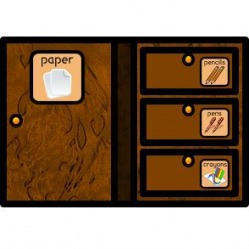
As with other doors in the environment, cupboard doors (and large drawers) can be labelled on the exterior with a symbol representing their contents. If staff are particularly organised, cupboards can contain a particular category of objects. This not only assists the individual to learn the symbol but also to begin to learn the notion of 'categories'. As many communication systems make use of a categorised approach, it is an important skill for any person to learn.
Staff should INVOLVE the Learner in locating items in a particular cupboard or drawer as well as putting items away into a particular cupboard or drawer at the end of the session. In this way, the Learner begins to associate particular items with particular symbols. Thus, staff should not necessarily get everything out on the table top when the Learners arrive and should not clear up after the Learners have left but, rather, make use of these experiences to teach symbol associations and categorisation skills.
Staff should INVOLVE the Learner in locating items in a particular cupboard or drawer as well as putting items away into a particular cupboard or drawer at the end of the session. In this way, the Learner begins to associate particular items with particular symbols. Thus, staff should not necessarily get everything out on the table top when the Learners arrive and should not clear up after the Learners have left but, rather, make use of these experiences to teach symbol associations and categorisation skills.
SOS: Symbols On Switches
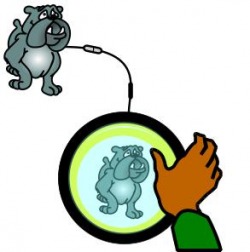
It is common to see both switches and simple communication aids being used WITHOUT any attached symbol to tell the Learner what action they perform. A red BIGmack is presented in one session which says 'hello' and a similar red BIGmack is presented in another which says something completely different. The Learner is expected to make sense of this. Such practice may serve to promote 'flyswatting' (child learns to 'flyswat' the system when it is presented without any of the understanding that staff are claiming) at best and confusion at worse.
If symbols are are attached to switches (it's the primary purpose of the switch cap) and to simple communication aids then, because they are used so frequently, there is every chance that the Learner may come to make an association between the symbol and the POLE (person Object Location Event) that the switch is operating or the aid is communicating.
Symbolic Timetables
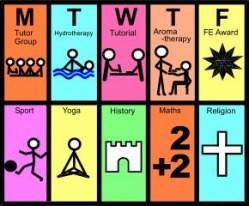
For all those, except individuals experiencing a Profound Intellectual Impairment who are working with Objects Of Reference (that have their own symbols: see 'by association' above) or some other system, in an establishment offering a varied curriculum, symbols can be used to form a symbolic timetable. Symbolic timetables can even be used to reference different parts of a single session as when, for example, a Learner progresses around different activities set up inside a lesson. Such a use of symbols, that make use of a Learners’ visual processing skills (by displaying future occurrences in pictures rather than relying solely on verbal instructions), can assist individual processing of forthcoming events (perhaps because the static nature of pictures allows the Learner more time). Research has noted that such schedules can bring structure and predictability to the daily routine (for example: see - Mesibov, Browder, & Kirkland, Using individualized schedules as a component of positive behavior support for students with developmental disabilities. (Journal of Positive Behavior Interventions, 4, pp 73–79, 2002).
The daily session timetable symbols should match any symbols used on doors to classrooms (if such a system is in place) so that concepts are continually and consistently reinforced.
The daily session timetable symbols should match any symbols used on doors to classrooms (if such a system is in place) so that concepts are continually and consistently reinforced.
Activity Schedules
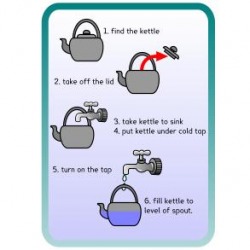
Activity schedules, work agendas, task timetables, etc are lists of the things that are needed to be done in the pattern that they need to be addressed in order to complete a given task. They can either be text-based or symbolic (or both). They can be:
- a simple list of things that are needed:
1. soap powder
2. toilet roll
3. shoe polish
as in a shopping list or,
- a list of the steps involved in a specific task:
1. locate kettle
2. remove lid
3. take kettle to sink
4. put kettle under cold tap ...
- a recipe (to make a cake for example)
- a set of directions to find a particular location:
1. go to the door
2. leave the room and turn right
3. walk to the end of the corridor
4. turn left ...
or, indeed, anything similar.
Symbols can make such agendas, schedules, lists, directions or steps much more inclusive for people experiencing learning difficulties at any age. By using symbols in the context of such tasks, the symbol's iconicity is elevated: it is easier to guess what a symbol represents if it is seen in a specific context and the context is known. Seeing and using symbols in this way can help individuals learn their meanings.
- a simple list of things that are needed:
1. soap powder
2. toilet roll
3. shoe polish
as in a shopping list or,
- a list of the steps involved in a specific task:
1. locate kettle
2. remove lid
3. take kettle to sink
4. put kettle under cold tap ...
- a recipe (to make a cake for example)
- a set of directions to find a particular location:
1. go to the door
2. leave the room and turn right
3. walk to the end of the corridor
4. turn left ...
or, indeed, anything similar.
Symbols can make such agendas, schedules, lists, directions or steps much more inclusive for people experiencing learning difficulties at any age. By using symbols in the context of such tasks, the symbol's iconicity is elevated: it is easier to guess what a symbol represents if it is seen in a specific context and the context is known. Seeing and using symbols in this way can help individuals learn their meanings.
Here and Now
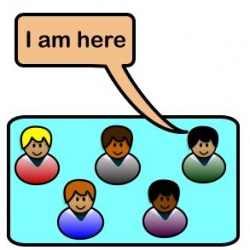
In addition to morning and afternoon registration, if each class member was encouraged to locate and hand their own symbol to a staff member, those remaining on the symbols board must be those that are absent. Such symbols could be photographs of each class member on a different coloured background combined together with a special symbol actually chosen by each Learner. For example, Derek might use a dog, while Susan might select a flower and John a car. The task of each class member is locate their own symbol at each registration and hand to a specified member of staff. Initially the symbols could always be in the same poition on the registration symbol board but, when a certain level of ability is reached, the symbols could be swapped around such that Learners have to recognise their symbol by sight alone.
Symbol ... Referent Bonding
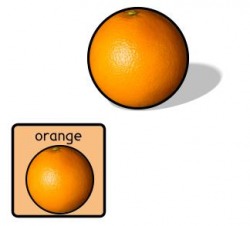
At some point in a Learner's education, it will become necessary to move from the use of real objects as a means to communication to the use of symbols. Apart from the issues of space, weight, availability and inconvience in the transporting of real objects, symbols allow the development of a new important skill; the ability to talk about a thing while it is out of sight. Thus, symbols can free Learners from contextually dependent communication.
In order to move to this stage, the Learner will need to understand that a two dimensional image relates directly to a three diensional object. that a drawing of an orange relates to the fruit he often eats during the day, for example. For many Learners this stage of development may be achieved early and without problem; for others, it may take additional tuition and support.
In the example depicted, the orange symbol looks exactly like the real orange. However, it may be that the Learner never experiences a real orange but only oranges that are peeled and cut into segments and so, the ornage symbol looks nothing like the Learner's experience of an orange in the world. There are, at least, two approaches to be made here: the first is to improve the learner's experience of the world and ensure that s/he is involved in preparing the orange snacks from the real fruit. Indeed, the Learner could be involved in the purchase of the fruit from the market (or, indeed, in the growing of the fruit in the garden if it is possible to grow that fruit in a particular climate). The second is selecting the symbol that looks more like the Learner's real life experience. The latter may be the more difficult even though there are a wide range of symbol sets available as well as images that can be obtained from the web.
In order to move to this stage, the Learner will need to understand that a two dimensional image relates directly to a three diensional object. that a drawing of an orange relates to the fruit he often eats during the day, for example. For many Learners this stage of development may be achieved early and without problem; for others, it may take additional tuition and support.
In the example depicted, the orange symbol looks exactly like the real orange. However, it may be that the Learner never experiences a real orange but only oranges that are peeled and cut into segments and so, the ornage symbol looks nothing like the Learner's experience of an orange in the world. There are, at least, two approaches to be made here: the first is to improve the learner's experience of the world and ensure that s/he is involved in preparing the orange snacks from the real fruit. Indeed, the Learner could be involved in the purchase of the fruit from the market (or, indeed, in the growing of the fruit in the garden if it is possible to grow that fruit in a particular climate). The second is selecting the symbol that looks more like the Learner's real life experience. The latter may be the more difficult even though there are a wide range of symbol sets available as well as images that can be obtained from the web.
There are a number of strategies that may be employes to assist a Learner to understand the relationship between a symbol and its referent, some of which have already been outlined on the web page with some additional ones following in the sections below. The following is a list of some of the strategies that may be employed to build symbol referent bonds. There is no pretence that it is fully comprehensive or that it is any order of merit. If you are aware of other strategies that you would like to see added, please contact me at Talksense.
|
Symbol baseline
Object symbol pairing Label the environment Symbol timetables Symbol menus Switch symbols Environmental engineering (TRV) Symbol interchange (PECS) Symbol snap Symbol pairs game Children's books Photographs & Paintings Toys and models Symbolic play Imitation of symbolic actions |
text in here on each heading
Under construction apologies In becoming symbolic creatures, we learn to think abstractly. At age three, children acquire the ability to think about things in two different ways at the same time: as both an object and a symbol for something else. Acquiring symbolic understanding is an important milestone in the cognitive development that helps us figure out how the world operates. Children's books are full of two diensional images that reference items in the real world. All children have to understand that the images in the books relate to real (and somtimes imaginary real things like ghosts and witches) things in the world. It happens so naturally that we almost take it for granted. Very young children (6-9 months) will explore a picture book manually, running their hands over the pages to try to make sense of the two dimension aspect of an apparently three dimensional image. They will even try to pick up the item in a good quality colour photograph if it is of a size that they believe is something they can handle. In doing so, they begin to realise that the image is NOT a known object but a 'picture' of a known object. Colour photographs are explored more than black and white photographs which, themselves are more explored than colour line drawings and last are black and white line drawings. The more the picture actually looks like the item it represents the more the young child will explore. However, there is still some exploration of black and white line drawings. Thus, a big part of learning about symbols is in the exploration and involvement in children's story books. However, that immediately throws up a problem; how can a child experiencing a severe physical disability explore the pictures in a book in the same way? It is our job to make that possible. Making such books accessible assists children not only in the specific symbolics of literacy (text) but in also coming to terms with symbols and their referents in general. Typically, by the time children are nineteen months old they will stop exploring pictures in books as though they were real objects and begin to interact with them as though they were pictures: they actually begin to point to the pictures to communicate with Significant Others. Children, at this age, now have the idea of the picture as opposed to the object. Many individuals experiencing a profound intellectual impairment may be operating at a cognitive level of less than this age. They need to be given experiences that allow them to understand the duality of the symbol. Things that are representations of other things such as photographs and paintings are in themselves symbols. They symbolise the thing in the photo although they are in and of themselves real things. Thus, if a children is encourage to paint, draw, and create representations of other things in subjects such as art (for exampe) they are learning about representation and about symbols. Just pushing your hand into some wet plaster to make a copy of your hand or drawing around your hand shape both create symbols. Children should be given lots of such experiences in order to build teir awareness of themselves and the world in general and representation and symbols in particular. In playing with toys that are scaled down versions of the real thing (such as a toy car) or playing with a model of a real thing, children are playing with symbols. As they start to involve themselves in play and create sound effects, movements, and any accompanying comments that relate to the toy/model as if it was a real object in the real world then they are working with a duality of representation which is an essential component of understanding and working with two the dimensional symbols as used on this web page. Thus it is important that children be involved in all forms of imaginary play for, in so doing, they are developing (and demonstrating) awareness of symbolic understanding. Children, up to approximately the age of 2.5 years, are typically unable to understand a relationship between a model and a real thing. Yet, by three years of age the misunderstanding is all but gone. In an experiment, children were shown a scaled down version of a room and a scaled down version of a toy was hidden in the model room so that the children could see were it was hidden. When the child was taken to the real room to locate the toy, at up to 2.5 years of age they could not do it. However, nearly all children at three years of age had no problem whatsoever with the assignment (DeLoache J., 2007, Allen L. Edwards Psychology Lectures). The children who could not locate the toy in the real room, however, could locate the miniature toy in the model room after returning: it was not a problem of memory. Children engage in symbolic play all the time. They will use an object from their world as a representation of another thing. They might use a broom stick as a motorbike, for example. It's not they they don't know it's a broom stick but, for the moment, they pretend that its a bike, or a plane, or a horse and use it symbolically. In typical child development, children will use all manner of items for symbolic play (see above). This area focuses on the child's ability to copy another's symbolic play or use of items. For example, if a member of staff picks up a broom and uses it as a pretend sword, or a pretend bat, or a pretend horse, does the Learner (if able) do the same? |
Working With Symbols
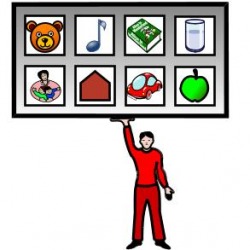
This section of the web page deals with the topic of working with symbols in the classroom or elsewhere in the Learner's environment.
Talking Mats
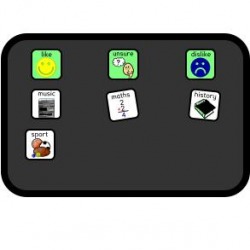
Talking Mats is a low tech communication framework involving sets of symbols originally devised at the University of Stirling in Scotland by Dr. Joan Murphy and her colleagues. Since its original conception, it is now an established communication tool, which uses a mat with symbols attached as the basis for communication. It is designed to help people with communication difficulties to think about issues discussed with them, and provide them with a way to effectively express their opinions. Talking Mats can help people arrive at a decision by providing a structure where information is presented in small chunks supported by symbols. It gives people time and space to think about information, work out what it means and say what they feel in a visual way that can be easily recorded.
The symbol set used must obviously be one that is recognised by the individual concerned and that the areas of the Talking Mat are adequately explained in terms that can be readily understood. It is also imperative that the 'facilitator' does not 'lead' (intentionally or unintentionally) the individual into the selection of an area of the mat.
The symbol set used must obviously be one that is recognised by the individual concerned and that the areas of the Talking Mat are adequately explained in terms that can be readily understood. It is also imperative that the 'facilitator' does not 'lead' (intentionally or unintentionally) the individual into the selection of an area of the mat.
Talking Mats are a form of Temporarily Restricted Vocabulary that can be used to assist individuals express their views on specific matters and therefore be more included in decisions about matters affecting their lives.
Choice Pickings
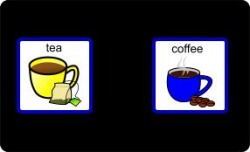
Learners can be tasked to make choices using symbols: by selecting a symbol, Learners can state what they want (to drink in the example). The number of symbols presented can begin with one (hobson's choice)! We present the symbol and then, in this instance, present the drink. In presenting a choice of two symbols, one might be 'null'. For example, in the drinks example as shown, either choice is correct if the Learner likes both drinks. However, if we presented a symbol for an empty glass alongside the symbol for the Learner's favourite drink then the Learner's choice over a number of trails would indicate a particular level of awareness. What if the Learner 'requests' an empty glass?! Then give the Learner an empty glass! After providing the glass turn away for a few seconds and then return. Say something like, "You drank that quickly. You must be thirsty. Would you like another drink?" and represent the symbols for a second choice to be made. Eventually, the Learner will get a drink: there is no intent to deprive any Learner of a drink at any time, simply to teach the Learner that what is selected is what is provided. When the Learner can pick out the 'correct' symbol on every occasion then introduce a second drink symbol. Symbols can be added to the choice set once each additional level is mastered but it is probably not worth moving beyond 4 or 5 symbols in the selection set if the Learner is genuinely making 'correct' selections. At this point, we need to be working on other skills.
It should be noted that accessing/selecting or pointing to a symbol does NOT indicate that a conscious choice has been made! Perhaps the colour attracted the Learner, perhaps the Learner selected the first symbol that was reached, perhaps it was an accident. We cannot claim that the Learner understood the symbols and/or made a conscious choice without additional evidence.
That is not to say that this approach is bad practice. far from it! We are actually teaching Learners that what is selected is the item they will get. Eventually, they may come to realise that:
- a particular symbol is associated with a particular item;
- selecting a particular item selects the item (a choice has been made).
Choices can be easily and quickly displayed using velcro friendly fabric boards and laminated symbols attached via velcro stickers. Trifold display boards are particularly useful for this purpose (Tri-fold boards are available from Ability World in the UK and Augmentative Resources in the USA).
Symbols can also be presented to the Learner one at a time. The Learner's task is to indicate when the correct symbol has been reached. Of course, the Learner may just be indicating randomly or not actually indicating at all. However, if we supply the item that we believe is indicated each time, then, the Learner may come to understand that a certain piece of body language makes a selection from a set of symbols.
If we:
- mix up a set of symbols so that we are unaware of the order;
- present them to the Learner so that we cannot see the symbol faces,
- ask the Learner to indicate when a particular symbol is reached.
then we are working 'blind'. We cannot unintentionally 'cue' the Learner as to the correct time to repsond. The Learner may select the correct symbol by chance but, if we repeat the exercise and the lLearner continues to select the correct symbol then, we can assume that the Learner has an awareness of a particular symbol word correspondence. However, it is important to realise that, if the Learner gets it wrong, we cannot assume anything! The Learner may not want to cooperate, may be having an off day, may not like the person with whom they are working, may not feel too well ... there are lots of reasons for getting an answer incorrect. While we cannot never state categorically that a Learner does not understand, we can state/prove that s/he does! This is a much more positive stance to take. If a Learner can corrrectly select the symbols for a few drinks in a 'blind' situation then, it is safer to assume that a real choice is being made when those same sysmbols are being used to make a decision over a preferred drink.
Choices can also be made by a Learner indicating a preference as a staff member points, one by one, to each of a row of symbols from which the Learner may select. Such an aproach is an early form of scanning that does not involve a computer or a switch! However, once again, we cannot claim that a Learner has made a choice simply because the Learner responded as the staff member pointed to a particular symbol. It may be that the Learner simply was responding to some other stimulus or changed body language because of being uncomfortable. All that can be claimed is we are teaching the Learner that, when s/he indicates a symbol choice that choice is what s/he will receive. There is a method of testing Learner understanding of the symbols using this approach:
- Find an old carboard box and turn it on its side;
- Inside the box, place an everyday item that you believe the Learner will recognise and understand;
- Place item in such a way that the Learner can see the item at all times;
- Arrange a set of symbols in front of the Learner in random order;
- One of the symbols should be a match for the item that has been placed in the box;
- Ask another member of staff (who is completely unaware of what is in the box) to come and poiint to each symbol in turn;
- Such that the Learner can indicate a choice.
- The new staff member should NOT be able to see what is inside the box.
- Can the Learner respond to the staff member's finger scan correctly?
Again, if the Learner can do this repeatedly, we can claim that there is understanding. If the Learner cannot do it at all, we cannot claim anything with absolute certainty. We might assume that there is little awareness if, over a number of trials, there are no correct responses but we can never state categorically that a Learner is incapable of (or uncognisant of) performing this task.
Note: if the Learner appears unmotivated, try playing it as a game and set the Learner against a peer who may is likely to motivate. The game who can tell the staff member what's in the box in the quickest time!
Sensory Story Selections
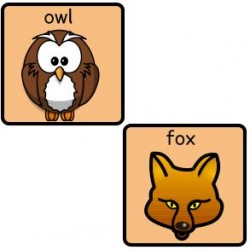
Creating 'Sensory Stories' is a means of making literature more accessible for children with a Severe or a Profound Intellectual Impairment (SPII). For example, see the Bag Books website: http://www.bagbooks.org. In creating such stories lines, staff can offer the 'listerners' choices of events that could happen. For example:
John went walking through the woods alone at night, suddenly there was a noise. What was it? What did he hear? Was it an owl or was it a fox?
at this point, the 'listeners' can vote on which of two or more choices to pick for the story. In this way, the listeners themselves can help to create the story line. Symbols can be used very effectively to display the possible choices of items.
Temporarily Restricted Vocabularies
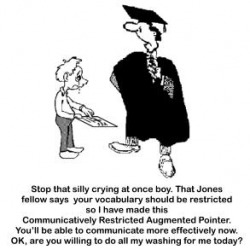
A Temporarily Restricted Vocabulary (TRV) is a small subset of a fuller communication system. TRVs make use of small symbol displays or arrangement of a small number of single symbols. The TRV is used to provide a means for a Learner to response within a specific framework. Typically teachers ask questions that require Fringe Vocabulary answers. However, by definition, Fringe Vocabulary is used only rarely and Learners will find it difficult to locate within any communication system. However, suppose instead of presenting a Learner with a full communication system from which to locate and chose an response, just a choice of three or four symbols were presented? The symbols presented would be selected specifically to provide the answers to a range of questions to be asked by a teacher to ascertain Learner understanding. The Learner has to select one from four instead of one from xxx (more than four!). This means that the Learner can respond as quickly as any other peer with more confidence than would be the case if a fuller communication system were to be used.
"All students, at all grade levels, are asked questions, ask questions of others, take oral examinations, and are called upon to recite
information. In some classrooms, even shy students who speak cannot get a word in edgewise. For augmented communicators, the
possibilities of well timed speaking is even more remote. The pace of verbal exchanges is too fast to allow even the most efficient student
using AAC to participate." (VAN TATENHOVE G. & VERTZ S. 1993, page 129 ,Strategies for the inclusion, independence, and
empowerment of nonspeaking students using the Liberator Communication aid, 14th Southeast Annual Augmentative Communication
Conference Proceedings, Birmingham, Alabama: SEAC)
A TRV (Temporarily Restricted Vocabulary)(pronounced TREV) is a small subset of the vocabulary contained within any person’s AAC system. It allows a beginner to be involved in an activity on an equal footing with peers. For example, a TRV vocabulary may be set up to include the phrases:
"That’s right!” , "That’s wrong!”, "I need to think about it”, "I don’t know”
The class are told that they must use one of these phrases in response to the teacher’s questions in the session that will follow. For example, the maths teacher might say:
"If I am facing South and I turn two right angles clockwise I am now facing North.”
The pupil has to respond with one of the messages:
People using an AAC system can usually access one of the responses in real time on a level footing with their verbal peers. There is a further benefit. The messages are a useful addition to the user’s vocabulary. They may be used in other lessons and other situations they may encounter:
"Jane you’re 14 now , aren’t you?” ... "That’s right”
Other TRV’s might include:
‘I agree’ ‘I don’t agree’ ‘I’m not sure’ ‘I don’t know’
‘True’ ‘False' ‘Sometimes’
TRV’s can be noun sets. For example, a set of materials:
‘wood’ ‘Metal’ ‘glass’ ‘paper’ ‘plastic’
In this instance, the response required is one of the given materials:
- "Which material is transparent?”
- "Which material is used to make books?”
- "Which material is made from sand?”
- "Which material is not man-made?”
The material set is taught and reinforced in this way.
In the cartoon depicted above, at the beginning of this section, the TRV is not vaild. TRVs should always be a minimum of two words or phrases. If a person is tested for comprehension, the larger the TRV the less opportunity of obtaining a right answer by chance alone. At the other extreme, there is a limit to the size of any TRV. Too big a set becomes a sub-vocabulary or a category in its own right and does not allow a user to interact with peers on an equal footing in a classroom interchange. Ideally, a TRV is more than one but less than seven.
A TRV could be set up to give directions to a staff member in a treasure trail game or a game of hide and seek. For example:
‘Right’, ‘Left’, ‘Forward’, ‘Backwards’, ‘Stop’
‘Up’, ‘Down’, ‘Right’, ‘Left’
TRVs are ideal for games: Each player starts with one point. Using a pack of cards the user has to state whether the next card is ‘higher’ or ‘lower’ or ‘red’ or ‘black’ for a doubling of their points total - OR - ‘hearts’, ‘spades’, ‘clubs’, or ‘diamonds’ to treble their points total. The user may stop at any time by saying ‘stop’. The person with the highest points at the end is the winner.
The TRVs give control to the augmented communicator with minimum effort and without the need for many hours of vocabulary instruction. Temporarily Restricted Vocabularies:
- allow augmented communicators to participate in lessons on an equal footing with peers;
- may be easily spoken in real time; the class is not made to wait for long periods while a user generates a response;
- can ease the pressure felt when asked a question;
- ensure users are not singled out as special - everyone is the same;
- are easy to set up; vocabulary may be quickly programmed into some systems by the tutor involved;
- involve subject tutors in the tuition of new vocabulary;
- do not require many hours of vocabulary tuition before their use;
- may be themed, paged, setted, or categorised for the ease of a scanning user;
- speed access to vocabulary for switch users;
- allow symbols to be displayed at a larger size to ease selection. Later these can be added to a user's symbol board at
the standard size;
- may be used to teach and test key concepts;
- are best used with all pupils or students in a class or group;
- are always >greater than 2 but typically less then 6.
"Jane you’re 14 now , aren’t you?” ... "That’s right”
Other TRV’s might include:
‘I agree’ ‘I don’t agree’ ‘I’m not sure’ ‘I don’t know’
‘True’ ‘False' ‘Sometimes’
TRV’s can be noun sets. For example, a set of materials:
‘wood’ ‘Metal’ ‘glass’ ‘paper’ ‘plastic’
In this instance, the response required is one of the given materials:
- "Which material is transparent?”
- "Which material is used to make books?”
- "Which material is made from sand?”
- "Which material is not man-made?”
The material set is taught and reinforced in this way.
In the cartoon depicted above, at the beginning of this section, the TRV is not vaild. TRVs should always be a minimum of two words or phrases. If a person is tested for comprehension, the larger the TRV the less opportunity of obtaining a right answer by chance alone. At the other extreme, there is a limit to the size of any TRV. Too big a set becomes a sub-vocabulary or a category in its own right and does not allow a user to interact with peers on an equal footing in a classroom interchange. Ideally, a TRV is more than one but less than seven.
A TRV could be set up to give directions to a staff member in a treasure trail game or a game of hide and seek. For example:
‘Right’, ‘Left’, ‘Forward’, ‘Backwards’, ‘Stop’
‘Up’, ‘Down’, ‘Right’, ‘Left’
TRVs are ideal for games: Each player starts with one point. Using a pack of cards the user has to state whether the next card is ‘higher’ or ‘lower’ or ‘red’ or ‘black’ for a doubling of their points total - OR - ‘hearts’, ‘spades’, ‘clubs’, or ‘diamonds’ to treble their points total. The user may stop at any time by saying ‘stop’. The person with the highest points at the end is the winner.
The TRVs give control to the augmented communicator with minimum effort and without the need for many hours of vocabulary instruction. Temporarily Restricted Vocabularies:
- allow augmented communicators to participate in lessons on an equal footing with peers;
- may be easily spoken in real time; the class is not made to wait for long periods while a user generates a response;
- can ease the pressure felt when asked a question;
- ensure users are not singled out as special - everyone is the same;
- are easy to set up; vocabulary may be quickly programmed into some systems by the tutor involved;
- involve subject tutors in the tuition of new vocabulary;
- do not require many hours of vocabulary tuition before their use;
- may be themed, paged, setted, or categorised for the ease of a scanning user;
- speed access to vocabulary for switch users;
- allow symbols to be displayed at a larger size to ease selection. Later these can be added to a user's symbol board at
the standard size;
- may be used to teach and test key concepts;
- are best used with all pupils or students in a class or group;
- are always >greater than 2 but typically less then 6.
Environmental Engineering with TRVs
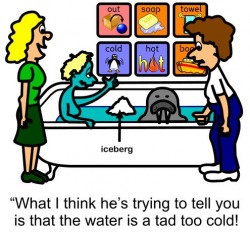
It is possible to use Temporarily Restricted Vocabularies to engineer the environment. For example, the boy in the bathtub is using a set of symbols attached to the wall adjacent to the bath to communicate with those who are assisting him. In the cartoon, the boy is pointing to the cold symbol to tell the assistant that the water is too cold! It is likely that a person in a bathtub may need to communicate about certain things such as the temperature of the water or the toy with which s/he wants to play rather than what is for dinner later in the day. Engineering the environment, by placing useful symbols in appropriate positions, can motivate a Learner to communicate. The vocabulary needed for the bathtub is 'restricted' to that which is useful for a person having a bath and therefore only a few symbols are required.
In control: active not passive
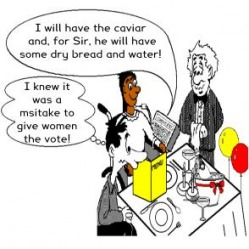
.....learners with disabilities are taught to be compliant, to follow the instructions of others.
Compliance training is not considered complete until it generalizes across persons and
directives, so that any stranger can give the learner any instruction and get compliance.
(SIGAFOOS J. & REICHLE J. 1991)
Learned helplessness occurs when it is unclear to the learner that he or she is unable to
exert control over the environment. Guess, Benson, & Siegel-Causey (1985) suggest that
learners who exhibit helplessness see no relationship between their actions and
environmental outcomes. (REICHLE J. 1991 p. 141)
The primary intervention strategy used to remedy learned helplessness involves the
establishment of the learner's contingent control over some aspect or aspects of the
environment. (REICHLE J. 1991 p. 141)
The provision of positive control experiences early in life will be a primary factor in helplessness immunization. Vocabulary selection
for and design features of AAC systems can significantly change the level of personal power and control available to the augmented
communicator. (SWEENEY L. 1993)
Allowing and creating situations in which an individual can take control is an important tool to be used against the threat of passivity. The augmented communicator requires a vocabulary which permits directions to be given, allows for flexibility in approach and may be reasonably rapidly presented.
CASE STUDY: While teaching some of the lexical verbs to students at a college, the therapist and the tutor gave control of the situation to each of the Learners in turn. First they had to select a particular verb from a range of verb symbol choices. Then they had to select/say ‘GO'. The therapist and the tutor had to act out the verb until the Learner said ‘STOP'. ‘Kiss' was a popular verb with everyone concerned!
CASE STUDY: A tutor had told staff that should a student ask for or demand something then, in order the student experience control and understand communication has consequences, the staff should act on the demand. A short time later on entering a classroom the same tutor found a student with tears rolling down his face because he was laughing so much. He was selecting ‘glass of water' over and over again and the staff were obeying his commands. He had about six glasses of water in front of him. When the tutor asked the staff what they were doing they said they were simply doing what he had told them! However, if a three-year-old had a glass of coke in front of him and then asked for another, most parents would say ‘When you drink that one'. Why should this student be any different? Everyone saw the funny side of the situation. Best of all the student never forgot the symbol for a glass of water. He had experienced real control though communication.
Creating regular opportunities for individuals to make decisions or to take control (using their AAC systems) is important because they provide an element of choice, a situation in which new vocabulary may be taught, and the necessary experience which is so vital if passivity is to be kept at bay. For example:
While shopping - ‘What shall we buy next?' ‘Where shall we go next?'
Meals - ‘What shall we have for tea today?' ‘What time shall we eat?'
Problem solving - ‘You tell me what to do and I'll do it.'
Television - ‘It's your turn to decide what we are going to watch tonight.'
Leisure - ‘What shall we do this evening?' ‘Where shall we go?'
Remember, giving control:
- without the appropriate symbol vocabulary is a futile exercise;
- and then taking it away again is a waste of everybody's time. If you ask someone what they want to eat and they say
‘cake with cold baked beans on top' - give it to them! They deserve it for being able to say it! Don't repsond, ‘Oh no you can't have that.';
- but not seeing it through does not help a person to achieve responsibility.
Compliance training is not considered complete until it generalizes across persons and
directives, so that any stranger can give the learner any instruction and get compliance.
(SIGAFOOS J. & REICHLE J. 1991)
Learned helplessness occurs when it is unclear to the learner that he or she is unable to
exert control over the environment. Guess, Benson, & Siegel-Causey (1985) suggest that
learners who exhibit helplessness see no relationship between their actions and
environmental outcomes. (REICHLE J. 1991 p. 141)
The primary intervention strategy used to remedy learned helplessness involves the
establishment of the learner's contingent control over some aspect or aspects of the
environment. (REICHLE J. 1991 p. 141)
The provision of positive control experiences early in life will be a primary factor in helplessness immunization. Vocabulary selection
for and design features of AAC systems can significantly change the level of personal power and control available to the augmented
communicator. (SWEENEY L. 1993)
Allowing and creating situations in which an individual can take control is an important tool to be used against the threat of passivity. The augmented communicator requires a vocabulary which permits directions to be given, allows for flexibility in approach and may be reasonably rapidly presented.
CASE STUDY: While teaching some of the lexical verbs to students at a college, the therapist and the tutor gave control of the situation to each of the Learners in turn. First they had to select a particular verb from a range of verb symbol choices. Then they had to select/say ‘GO'. The therapist and the tutor had to act out the verb until the Learner said ‘STOP'. ‘Kiss' was a popular verb with everyone concerned!
CASE STUDY: A tutor had told staff that should a student ask for or demand something then, in order the student experience control and understand communication has consequences, the staff should act on the demand. A short time later on entering a classroom the same tutor found a student with tears rolling down his face because he was laughing so much. He was selecting ‘glass of water' over and over again and the staff were obeying his commands. He had about six glasses of water in front of him. When the tutor asked the staff what they were doing they said they were simply doing what he had told them! However, if a three-year-old had a glass of coke in front of him and then asked for another, most parents would say ‘When you drink that one'. Why should this student be any different? Everyone saw the funny side of the situation. Best of all the student never forgot the symbol for a glass of water. He had experienced real control though communication.
Creating regular opportunities for individuals to make decisions or to take control (using their AAC systems) is important because they provide an element of choice, a situation in which new vocabulary may be taught, and the necessary experience which is so vital if passivity is to be kept at bay. For example:
While shopping - ‘What shall we buy next?' ‘Where shall we go next?'
Meals - ‘What shall we have for tea today?' ‘What time shall we eat?'
Problem solving - ‘You tell me what to do and I'll do it.'
Television - ‘It's your turn to decide what we are going to watch tonight.'
Leisure - ‘What shall we do this evening?' ‘Where shall we go?'
Remember, giving control:
- without the appropriate symbol vocabulary is a futile exercise;
- and then taking it away again is a waste of everybody's time. If you ask someone what they want to eat and they say
‘cake with cold baked beans on top' - give it to them! They deserve it for being able to say it! Don't repsond, ‘Oh no you can't have that.';
- but not seeing it through does not help a person to achieve responsibility.
Forget to Remember

Here is a trick that anyone can do: Forget to remember!! Here is how it works:
- Tell the learner that you have run out of something that you really need.
Let's say, for example, coffee;
- Ask the Learner to remind you to get some when you are at the store;
- Provide the Learner with a method of reminding you: a symbol for coffee;
- Show the Learner how to use the provided method to remind you.
Do this before going to the store;
- On the way to the store keep reminding the Learner that they must remind you to get coffee;
- When you get to the store ... guess what? You forget to remember the coffee!
You must make no mention of it.
- Will the Learner use their symbol to remind you as you demonstrated?
- Huge praise if the Learner remembers and uses the symbol;
- If the Learner 'forgets' then ... do NOT suddenly remember and buy coffee anyway: that just defeats the object of the exercise.
- Wait, till after the store and, then, remember.
- Ask the Learner what they had to remember to tell you.
- Keep trying!
Again, this is putting a a little control in the hands of the Learner. The Learner is responsible for doing something. It can be more complex for more advanced Learners or really simple for those just at the beginning. You can be stood right in front of the coffee in the store (with a novice Learner) and throw out big hints ... 'I knew there was something I had to buy but I cannot think of what it was... oh well, it might come to me!". Do not simply buy the coffee ... it simply provides the wrong message. Continue the saga until after the store ... even going back to the store to practice! Make a big fuss about it all and praise highly when success is achieved.
When the Learner can perform the task without a problem, step it up! Give the learner two or more symbols for the store and only ask for a reminder for one of them. The learner now has to discriminate between the symbols and show the correct one to 'remind' you what you need. Maybe, eventually, the Learner will be able to go to the store on his or her own!
One more thing: do not stick simply to nouns: teach language (see below). That is, after the Learner has mastered the art of the reminder, ask the Learner to tell you to 'buy coffee', or 'big coffee', or 'buy two big coffees' ... A novice needs to learn language not just a bunch of nouns.
Learning Language Not Nouns
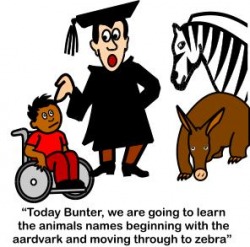
As has already be described, Core Vocabulary research from around the world shows conclusively that with the top one hundred most frequently spoken words in any client group there are very very few nouns (normally between 3 and 5). Average Core Vocabulary lists of the top 400 to 500 words are typically light on noun forms and yet many AAC systems are packed with them. Why is this? Perhaps its because nouns are easier to represent symbolically and, as generally concrete entities easier to teach than abstract and grammatical concepts. Perhaps staff believe that pupils need to be able to ask for things and, in so doing, are somehow equipped with what they need in life. However, if that were true, why don't research studies of our language use detail us spending the day asking for the items that we need? "I want xxx, please" ought to be the most frequently used word forms, but they are not. Undoubtedly, teaching a set of nouns might be easier than trying to teach language but a lack of language skills is truly handicapping in the real sense of the word.
As research studies inform us that we use nouns less frequently than we might imagine, stuffing AAC systems with them can be counter productive. That is because we tend to remember the things that we meet frequently and forget (or never learn) those that are relatively infrequent. Not only is the Learner likely to forget where specific noun forms are located within any given system but the constant demand for more and more (we need a page on the Romans) puts a great strain on those compiling the system. Staff and the Significant Others involved with supporting Learners may be spending many many hours creating and adding new vocabulary into a system when that time would be better spent in teaching the Learner language.
If we begin by teaching Core Vocabulary with just a smattering of nouns, we limit the task to something that is achievable not only for the Learner but also for the staff. As Core Vocabularies comprise those words that we use almost every sentence, if not, at least, several times a day, the vocabulary will not be forgotten, indeed it will become almost automatic. Yes, we have to start somewhere and that somewhere is typically a noun set of favourite Learner items, but we can soon progress to adding 'want' to the item and then 'I' to 'want' building from one through two to three and more word sequences. Indeed, our goal could be working towards the language available on some more advanced communication board. This may take years of endeavour for some Learners; however, ask yourself what the quality of your life would be like if you did not possess the level of skill in language that you now enjoy?
As research studies inform us that we use nouns less frequently than we might imagine, stuffing AAC systems with them can be counter productive. That is because we tend to remember the things that we meet frequently and forget (or never learn) those that are relatively infrequent. Not only is the Learner likely to forget where specific noun forms are located within any given system but the constant demand for more and more (we need a page on the Romans) puts a great strain on those compiling the system. Staff and the Significant Others involved with supporting Learners may be spending many many hours creating and adding new vocabulary into a system when that time would be better spent in teaching the Learner language.
If we begin by teaching Core Vocabulary with just a smattering of nouns, we limit the task to something that is achievable not only for the Learner but also for the staff. As Core Vocabularies comprise those words that we use almost every sentence, if not, at least, several times a day, the vocabulary will not be forgotten, indeed it will become almost automatic. Yes, we have to start somewhere and that somewhere is typically a noun set of favourite Learner items, but we can soon progress to adding 'want' to the item and then 'I' to 'want' building from one through two to three and more word sequences. Indeed, our goal could be working towards the language available on some more advanced communication board. This may take years of endeavour for some Learners; however, ask yourself what the quality of your life would be like if you did not possess the level of skill in language that you now enjoy?
Etran Symbolics
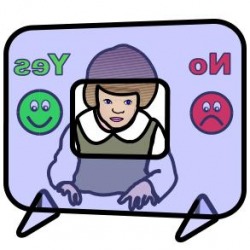
An etran frame is an eye gaze system comprised of a vertical piece of clear acrylic sheet (perspex) typically with a rectangle cut out of the middle. Objects , pictures, symbols, text, or letters can be arranged on the surface of the frame which is placed in front of a Learner such that the Learner can be encouraged to eye point to a particular symbol in order to communicate. The arrangement of 'symbols' on the frame can be anything from simple (choice) to a more complex letter encoding system.
Providing the Learner has the visual ability, it will be normal for a child to explore its environment using his/her eyes. It is normal for a child to look longer at things that they find interesting and to come to rest upon an item of particular interest. Indeed, Significant Others may already be picking up 'eye cues' from a Learner and assuming that the thing at which a Learner is looking, is what a Learner wants. The etran frame is a means of formalising this natural tendency into a more structured eye gaze communication system.
Starting very simply with perhaps just one or two real objects attached to the frame, the Learner can be encouraged to look at the thing that is required and is rewarded by being presented with the POLE (Person, Object, Location, Event) that the 'symbol' represents. It is important to use highly motivational objetcs/symbols, at least, intially otherwise the Learner may become bored with the process and refuse to use the system.
The Learner sits on one side of the frame and the 'listener' (communication partner) sits opposite on the other side of the frame so that s/he can clearly follow the Learner's eyes and will know where the Learner is looking. If the process is both fun and rewarding for the Learner then the system may have a chance of success and could be developed into an effective communication system. Sweets, biscuits, games, music, sounds, indeed anything that the Learner finds motivating can be used to begin.
If symbols are used on an Etran frame, they will typically be attached with velcro or with Blutack. In the early period, when the individual is just learning to use the system, it is probably better to use blutack as it is likely that the postioning of any attached symbol wil vary as skills improve. Only when the Learner has mastered the system and some form of more advanced communication system has been structured might a more permanent means of attachment be used in the form of Velcro hooks and eyes.
So that the 'listener' can read what the Learner is 'saying' the reverse of the symbol can either be an exact copy of the symbol or some text indicating the name of the symbol. However, just to ensure that the Learner is actually making real sense of using the etran frame, it is advisable, from time to time, to use symbol cards with plain backs so that the Learner is totally in control of the communciation and the listener cannot 'selective' decided at which symbols the Learner is looking. If the Learner does not know what is one the face of the cards then any sensible communication must have come from the Learner and not from the prompts or leads of another.
Providing the Learner has the visual ability, it will be normal for a child to explore its environment using his/her eyes. It is normal for a child to look longer at things that they find interesting and to come to rest upon an item of particular interest. Indeed, Significant Others may already be picking up 'eye cues' from a Learner and assuming that the thing at which a Learner is looking, is what a Learner wants. The etran frame is a means of formalising this natural tendency into a more structured eye gaze communication system.
Starting very simply with perhaps just one or two real objects attached to the frame, the Learner can be encouraged to look at the thing that is required and is rewarded by being presented with the POLE (Person, Object, Location, Event) that the 'symbol' represents. It is important to use highly motivational objetcs/symbols, at least, intially otherwise the Learner may become bored with the process and refuse to use the system.
The Learner sits on one side of the frame and the 'listener' (communication partner) sits opposite on the other side of the frame so that s/he can clearly follow the Learner's eyes and will know where the Learner is looking. If the process is both fun and rewarding for the Learner then the system may have a chance of success and could be developed into an effective communication system. Sweets, biscuits, games, music, sounds, indeed anything that the Learner finds motivating can be used to begin.
If symbols are used on an Etran frame, they will typically be attached with velcro or with Blutack. In the early period, when the individual is just learning to use the system, it is probably better to use blutack as it is likely that the postioning of any attached symbol wil vary as skills improve. Only when the Learner has mastered the system and some form of more advanced communication system has been structured might a more permanent means of attachment be used in the form of Velcro hooks and eyes.
So that the 'listener' can read what the Learner is 'saying' the reverse of the symbol can either be an exact copy of the symbol or some text indicating the name of the symbol. However, just to ensure that the Learner is actually making real sense of using the etran frame, it is advisable, from time to time, to use symbol cards with plain backs so that the Learner is totally in control of the communciation and the listener cannot 'selective' decided at which symbols the Learner is looking. If the Learner does not know what is one the face of the cards then any sensible communication must have come from the Learner and not from the prompts or leads of another.
Etran frames, used with symbols, can be simple or complex as depicted in the images above. The simple etran depicted is a choice between two drinks. It may be asked, 'why bother using an etran frame and symbols, why not just eye point to one of two real drinks?' There are, at least, two reasons:
- initially the choice would be made between two real items. However, as symbols are a means of talking about a topic out of context:
i.e. when the drinks are not present, this method, therefore, is used to progress towards a symbol-based communication system.
- as a means of introducing the etran system in a fairly simple manner.
The more complex system depiced shows a colour coded etran. There are several ways to create coded etran frame, colour coding is a common system in use. Such coding is used because it is difficult for a communication partner to discrimate between closely spaced symbols when the Learner is eye pointing. The Learner first looks at the word s/he wants to say. It is on a particular colour back ground (green for verbs, orange for nouns, yellow for pronouns, etc). Then, the Learner tells the communication partner the colour of the word chosen by eye poitning to one of the six coloured areas. Yes and no provide an easy method of answering any closed questions asked. The no symbol also acts as a negation of verbs (not) as well as a means to end a sentence (full stop in red x). Typically such colour coded etrans are letter based; the Learner spelling out the words required. Letters have been added to each of the symbol areas so that the Learner can switch to spelling if required and if literate.
There are many variations of etran frames. No one particular way of setting up is correct; it will depend upon individual skills, requirements and abilities. If it is felt that an etran frame might be a suitable system for a particular Learner then there are a number of ways that skills might be developed. Of course, it will depend on the existing abilities, skills and understanding of the Learner. At its most basic level, etran concerns eye pointing skills. Thus, early work must focus on activities to promote eye pointing. This may not begin with the frame itself but might involve training the Learner to understand that, looking at an object, selects the object. This aspect itself may be preceded by the development of such things as tracking skills, holding one's gaze, and cause and effect awareness. There will also be a period where it will be necessary to move from real object selection to work with symbols. In the period between objects and symbols, it is advisable to use strategies pair the symbol and its referent consistently such that the Learner develops the ability to work with symbols alone.
- initially the choice would be made between two real items. However, as symbols are a means of talking about a topic out of context:
i.e. when the drinks are not present, this method, therefore, is used to progress towards a symbol-based communication system.
- as a means of introducing the etran system in a fairly simple manner.
The more complex system depiced shows a colour coded etran. There are several ways to create coded etran frame, colour coding is a common system in use. Such coding is used because it is difficult for a communication partner to discrimate between closely spaced symbols when the Learner is eye pointing. The Learner first looks at the word s/he wants to say. It is on a particular colour back ground (green for verbs, orange for nouns, yellow for pronouns, etc). Then, the Learner tells the communication partner the colour of the word chosen by eye poitning to one of the six coloured areas. Yes and no provide an easy method of answering any closed questions asked. The no symbol also acts as a negation of verbs (not) as well as a means to end a sentence (full stop in red x). Typically such colour coded etrans are letter based; the Learner spelling out the words required. Letters have been added to each of the symbol areas so that the Learner can switch to spelling if required and if literate.
There are many variations of etran frames. No one particular way of setting up is correct; it will depend upon individual skills, requirements and abilities. If it is felt that an etran frame might be a suitable system for a particular Learner then there are a number of ways that skills might be developed. Of course, it will depend on the existing abilities, skills and understanding of the Learner. At its most basic level, etran concerns eye pointing skills. Thus, early work must focus on activities to promote eye pointing. This may not begin with the frame itself but might involve training the Learner to understand that, looking at an object, selects the object. This aspect itself may be preceded by the development of such things as tracking skills, holding one's gaze, and cause and effect awareness. There will also be a period where it will be necessary to move from real object selection to work with symbols. In the period between objects and symbols, it is advisable to use strategies pair the symbol and its referent consistently such that the Learner develops the ability to work with symbols alone.
Free Simple Symbol Service

If you are looking for a symbol and cannot find one for a particular word then please contact me and I will search my symbol banks and, hopefully, send you what you need free of charge. If I can't find one that I have already created then I will draw one afresh for you. Use the form at the bottom of this page to request a symbol. One symbol per week per establishment! I will try and reply as soon as possible but I cannot guarantee a quick response ... it depends on the demand!
I reserve the right to terninate this service at any time without notice.
Symbol Give-Away Pages

Talksense has created a number of symbols that are freely avilable on request for non-commercial use.
To move to the give-away page and to view the symbols on offer please click on the icon to the left.
To request the symbols, simply use one of the forms provided at the bottom of every page.
Please feel free to suggest new categories or additional symbols for any category.
Comments on the Symbols Page
If you have any comments (good or not so good) on the items on this page, please use the form below.
If you strongly disagree with anything I have suggested or you feel that something is missing or you just want to say 'well done!' then get in touch. Please do not simply be negative without suggesting alternatives. Do not say, 'That is rubbish!' but, rather, 'That is rubbish because ... and it is best achieved by ...
If you suggest anything that I subsequently use on the page, I will credit you and your establishment.
If you strongly disagree with anything I have suggested or you feel that something is missing or you just want to say 'well done!' then get in touch. Please do not simply be negative without suggesting alternatives. Do not say, 'That is rubbish!' but, rather, 'That is rubbish because ... and it is best achieved by ...
If you suggest anything that I subsequently use on the page, I will credit you and your establishment.
Featured Links to other symbol pages on the web
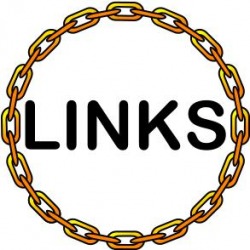
Under Construction apologies
Talksense does not endorse any of these links commercially other than thinking they appear to be a good source of information or materials that are specific to symbols. The links are arranged alphabetically. For general links go to the links page.
Giving Greetings / Say it with Symbols
Talksense does not endorse any of these links commercially other than thinking they appear to be a good source of information or materials that are specific to symbols. The links are arranged alphabetically. For general links go to the links page.
Giving Greetings / Say it with Symbols
Thanks and Acknowledgements

I would like to thank and or acknowledge the following people and or establishments for contributions to, help with, or submissions for this page. The thanks are listed in alphabetical order and NOT in any order of importance!
Sandra Miller and Jane Donnelly: FACCT, Fife
Please note: it should NOT be assumed that the people listed here necessarily agree with all the points listed on this page or endorse all items.
Page Under Construction: Apologies

This page is still under construction. More will be added over the next few weeks and months. I apologise for this. If you have any suggestions for the page please do not hesitate to get in contact.
Click on the arrow symbol below to return to the top of the page.
Click on the roadworks symbol to return to the home page.
